Gallery
-
St Ives Holiday Mount St Michael trip 29th June 2022
This was theoretically a day off from walking and we instead went to Mount St Michael, near to Penzance. Lovely gardens and a spectacularly sited house, reached by a causeway, as long as the timing is right! St Michael's Mount probably had monastics buildings from the 8th to the 11th Century and the earliest existing buildings date from the 12th Century. After many changes of ownership, the St Aubyn family purchased it in 1659 and descendants of that family still live there. The buildings were used as the home of Frankenstein in the 1979 film Dracula. The National Trust now own and manage most of the Mount, but the family have a 999 year lease.

Ready to walk the causeway to St Michael's Mount
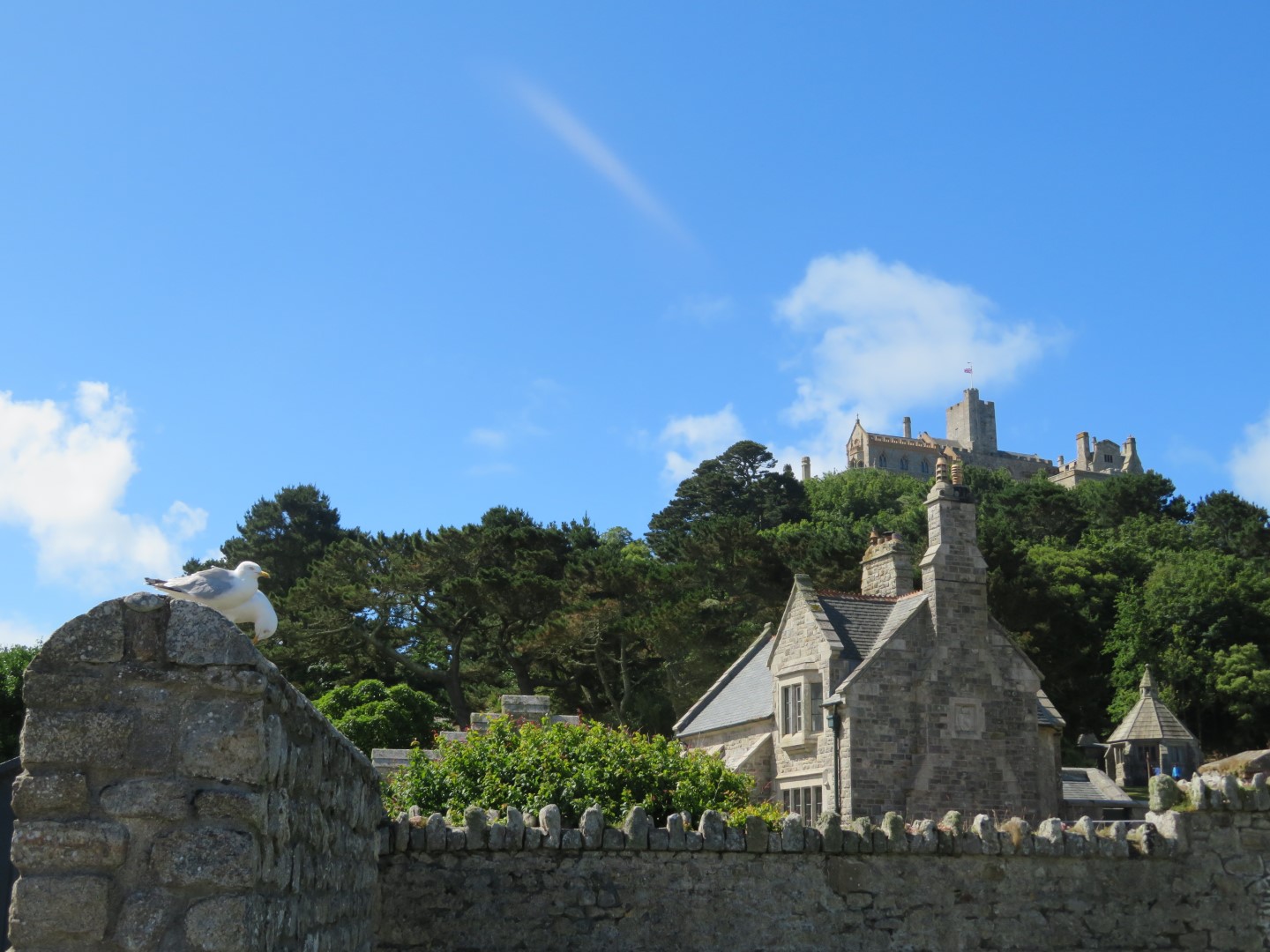
As well as the castle, the Mount also once had a large population which peaked at 221 in 1811. The population in 2011 was 35
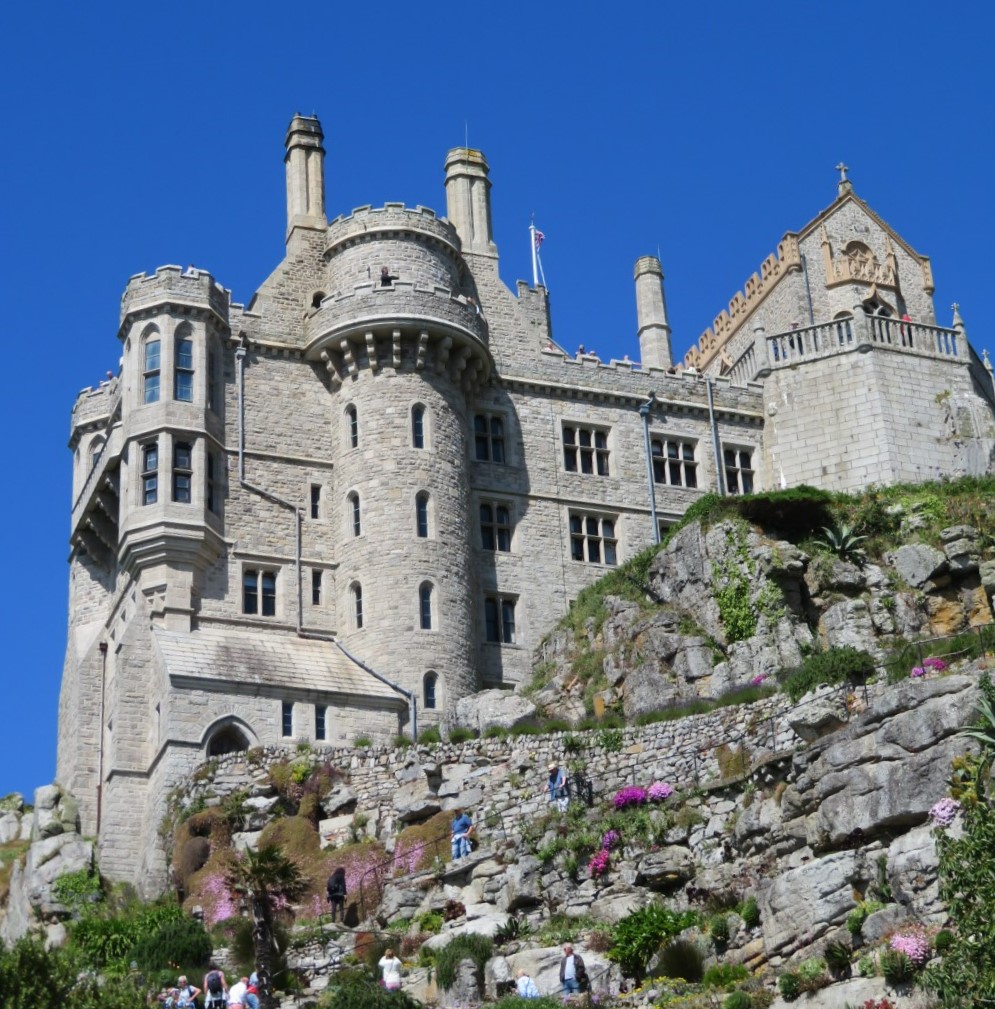
Around the garden are many lovely gardens, tended by the National Trust
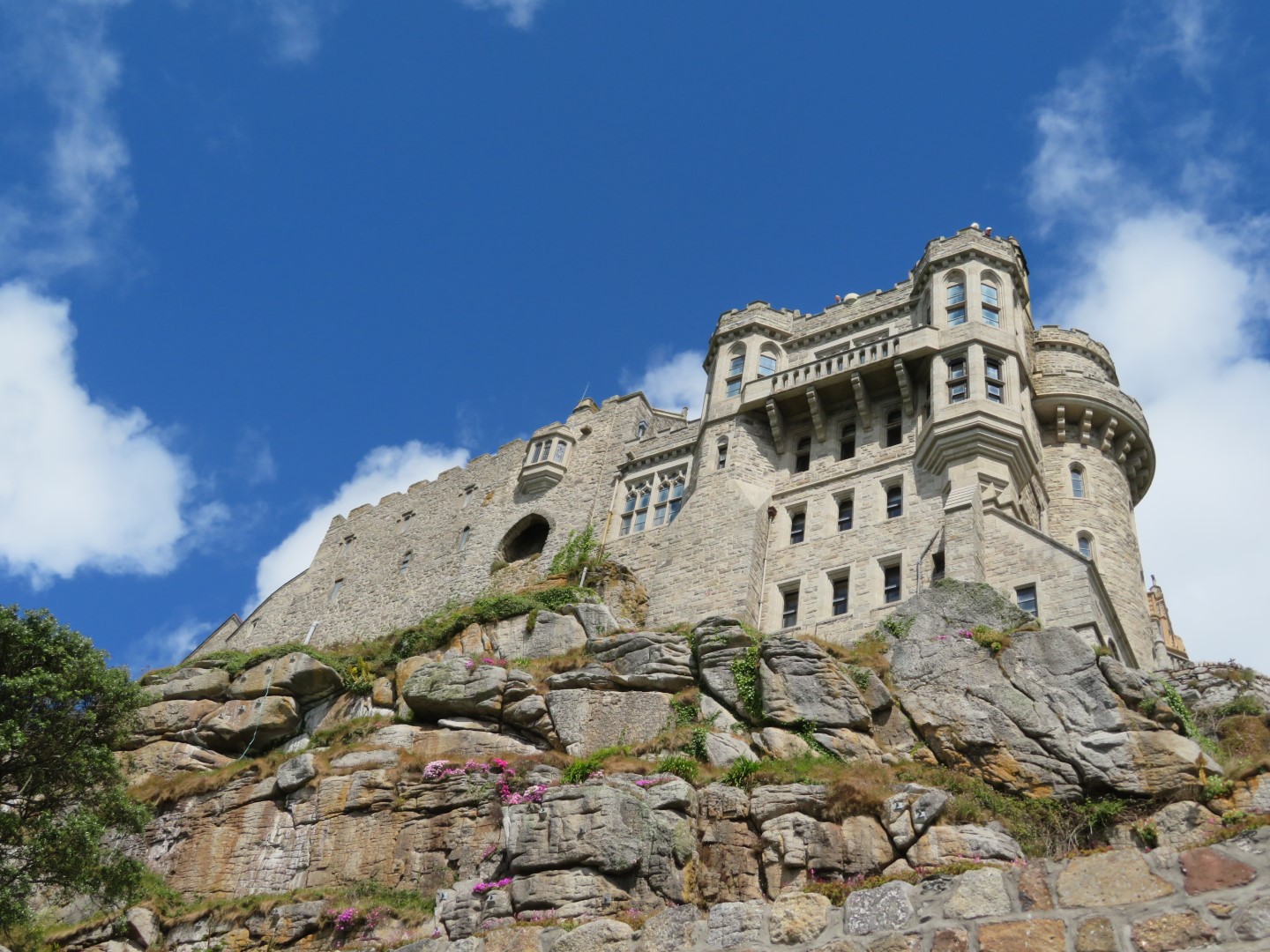
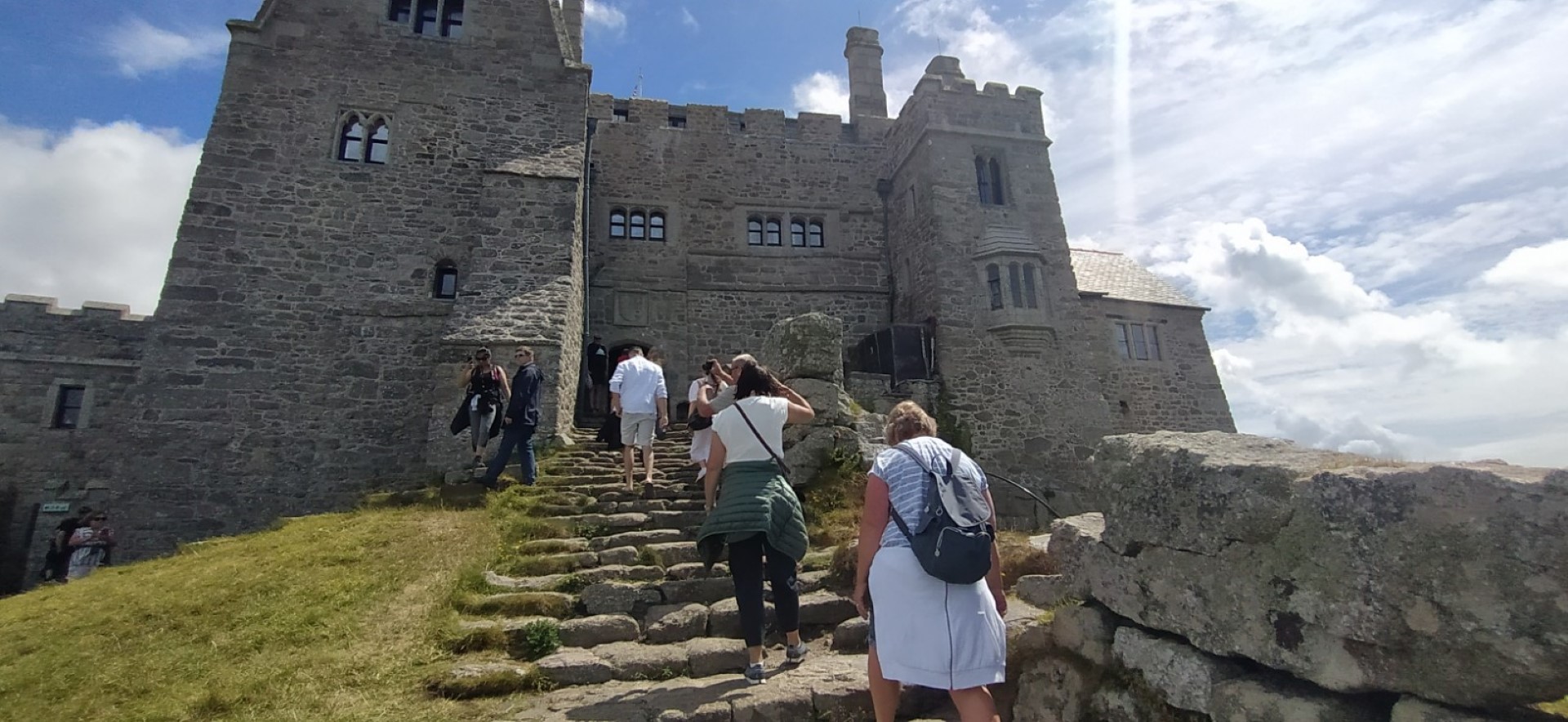
Main entrance. There is a small tunnel from the harbour built by miners which carries a narrow gauge railway, but is only used for goods, not people.
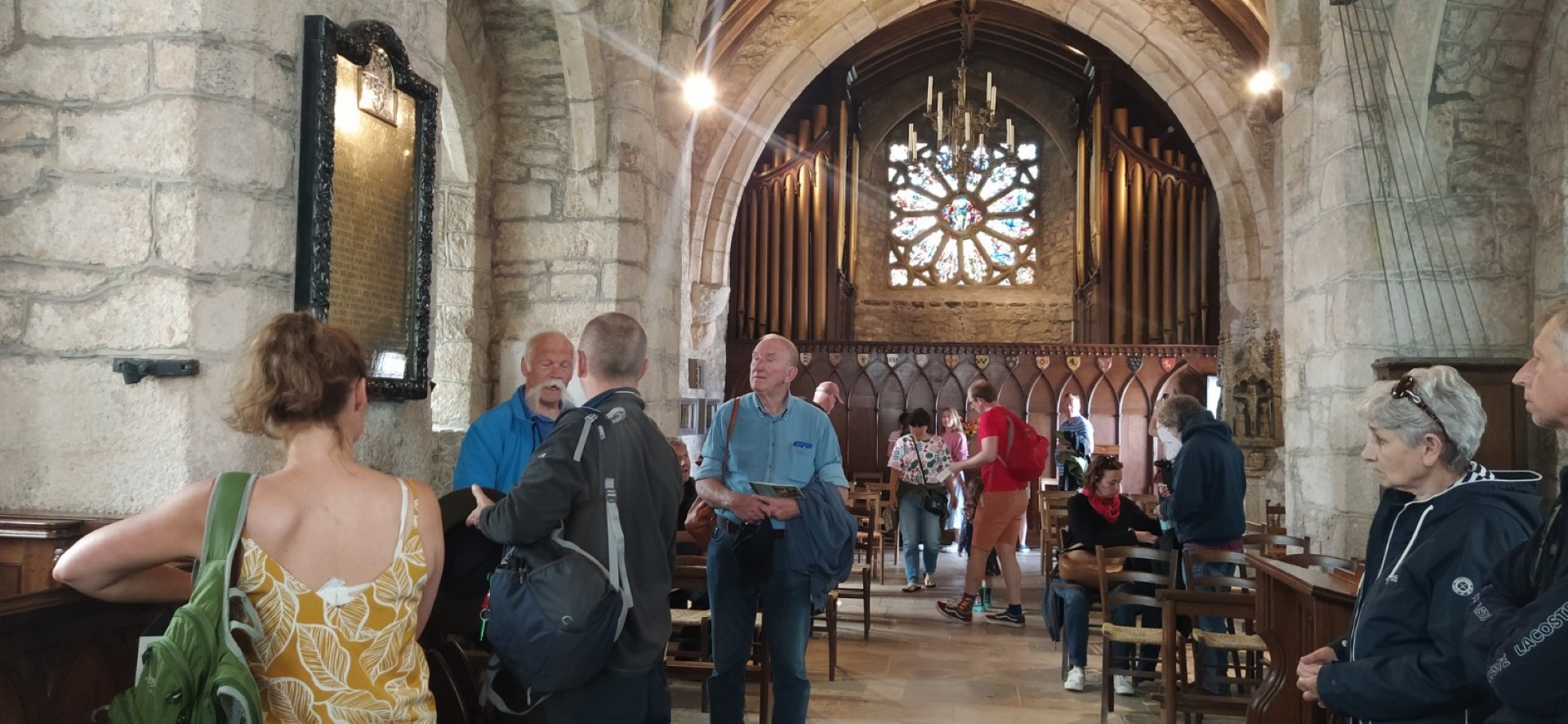
Inside the chapel at the top of the castle
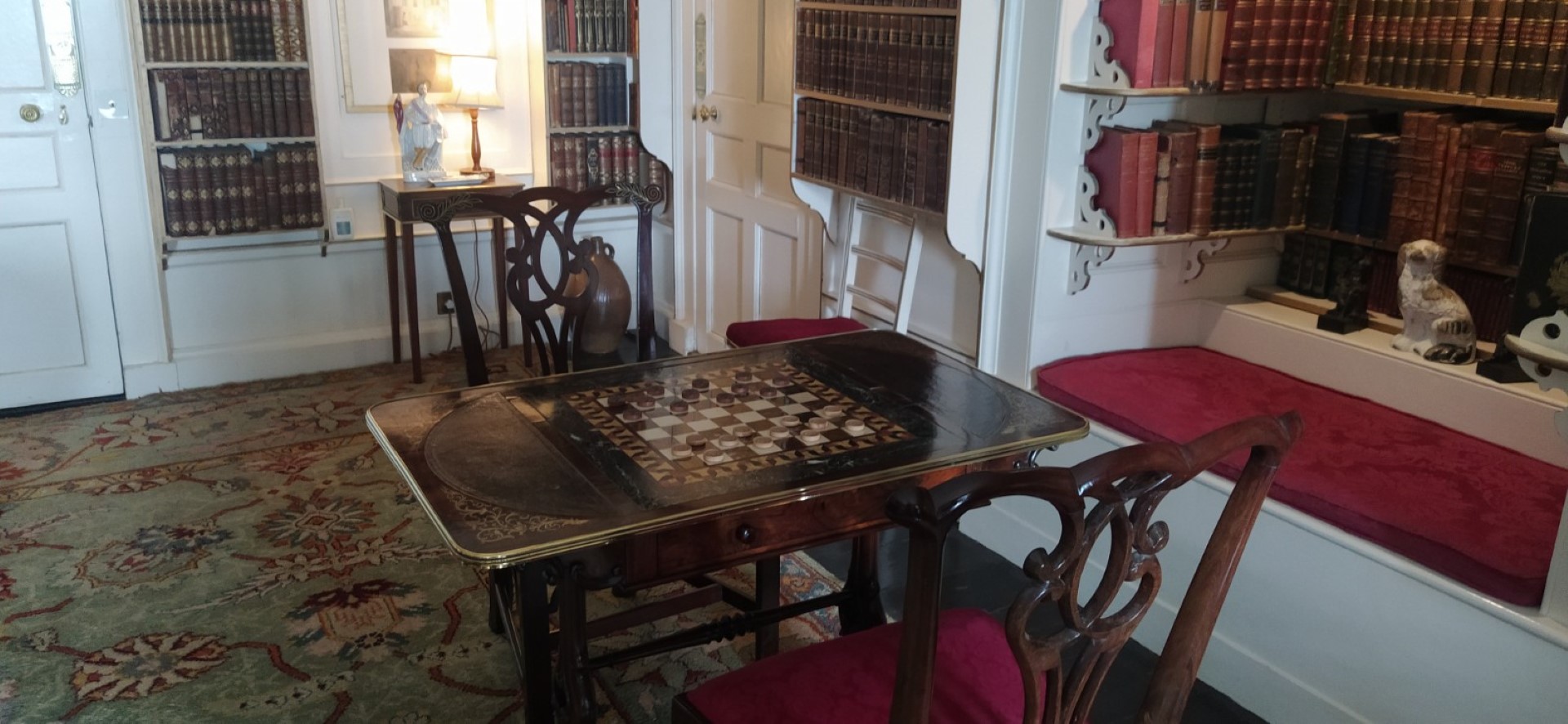
Plenty of reading matter if there's no-one to play draughts with.

The present Lady St Aubyn, busy knocking up some doilies to make ends meet.
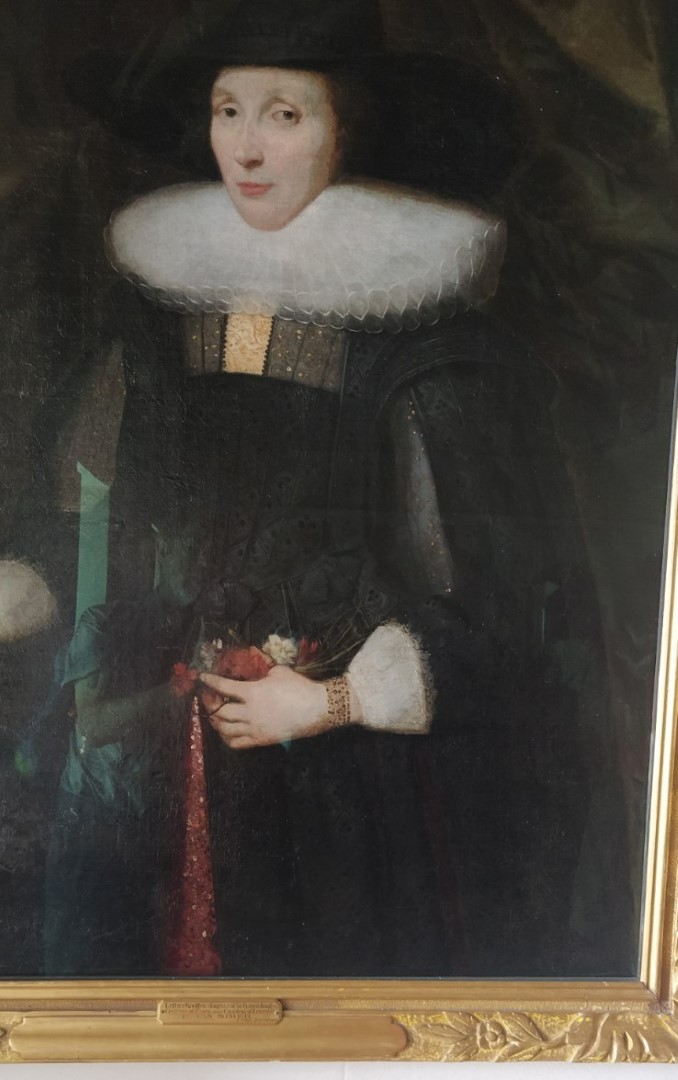
This is Lettice Knollys, first cousin once removed to Elizabeth I. The 3rd of 16 children she married the Earl of Leicester and was then banished from the royal court as Elizabeth I was also charmed by the Earl. Married 3 times, lived to 91. No connection with St Michael's Mount, just somewhere for the National Trust to store the portrait.

Causeway, before the tides comes in
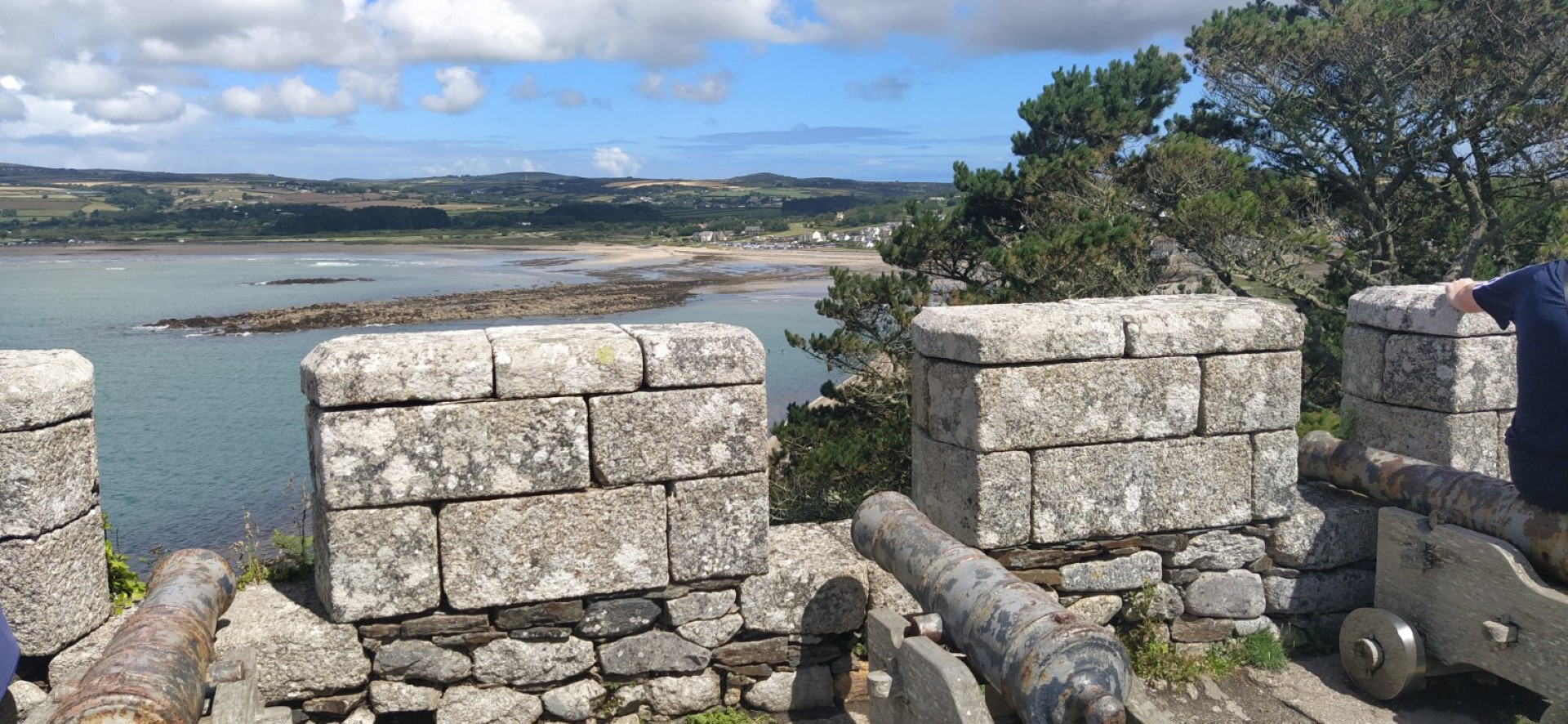
The Earl of Oxford captured it and then held if for 23 weeks during a siege by Edward IV troops in 1473/4

We managed to leave the Mount well before the tide covered the causeway
St Ives Holiday Geevor Tin Mine 28th June
This day had a poor forecast so we thought we would have a look at Geevor Mine and see if the rain held off. Deciding we would take a tour of the mine seemed a sensible decision. It was fascinating to see the extent of the mines under the sea and extending up to a mile out to sea. After going through the processing sheds we had to make a dash through the weather to Wheal Mexico, a 200 year old mine with safe access above sea level. Most of the old mine workings are now flooded. Once we had completed our Mine visit we drove down to a NT building called the Botallack Count House where we were allowed to eat our lunch inside. The Botallack Mine (as seen in the Poldark TV series) was visible through the rain, but we decided to call it a day and returned to St Ives.
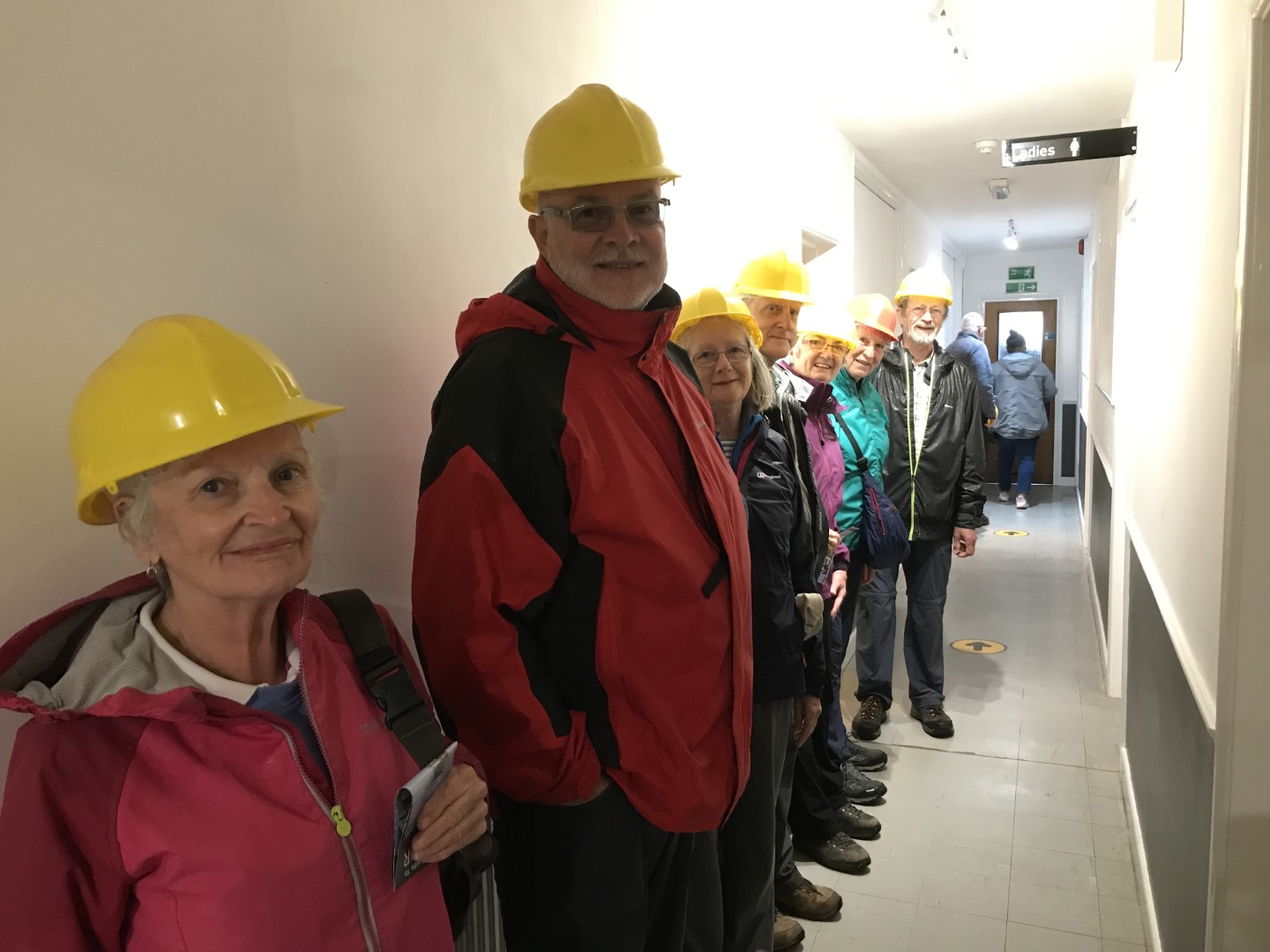
All signed up for the tour, hats were compulsory and much needed as we later found out!

This huge motor's job was winching all the heavy stuff up and down the mine, 1000ft down
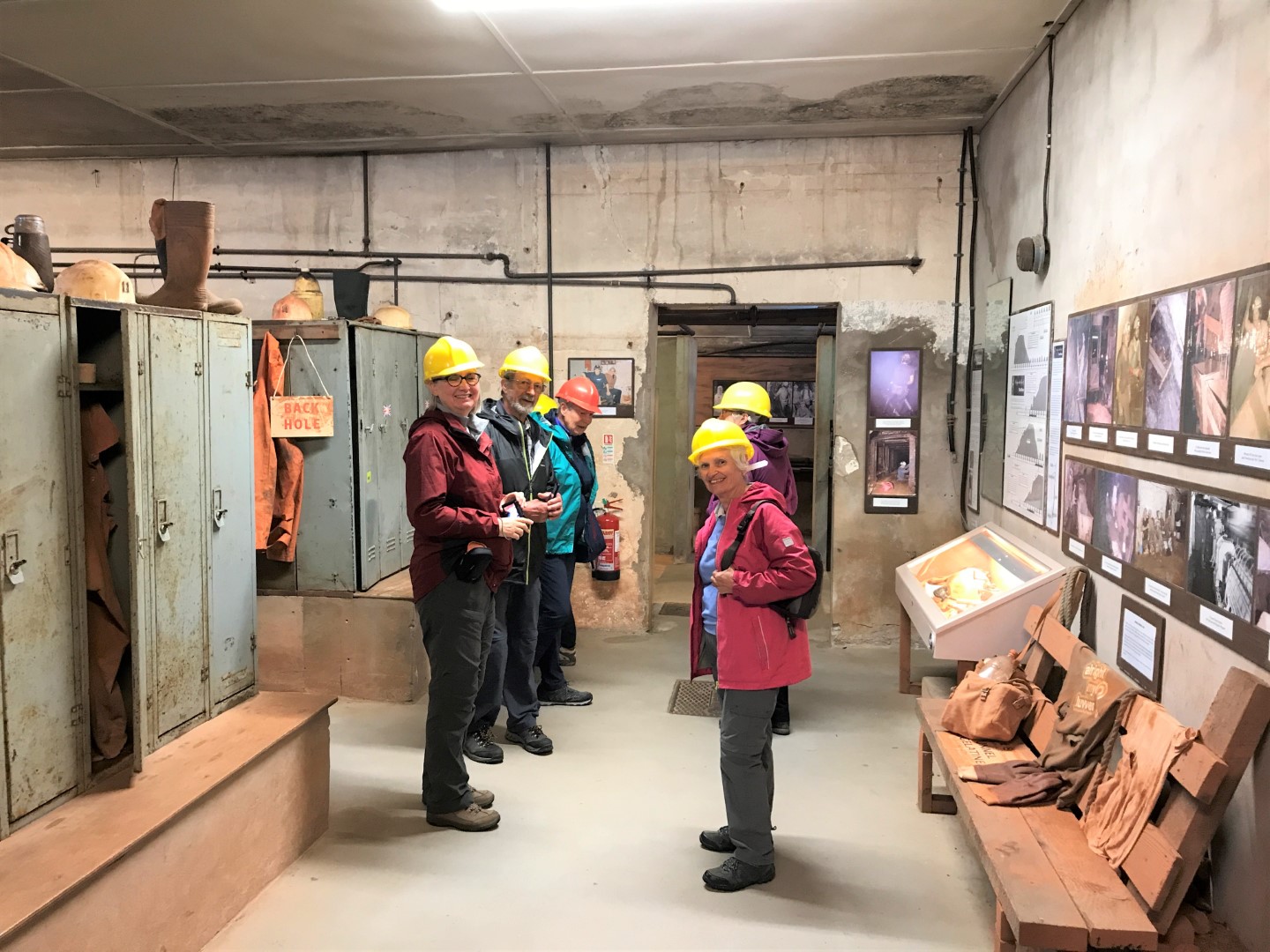
This was the locker room - the brown dust was everywhere. Left as it was on the last working day in 1990.
_moment.jpg) .
.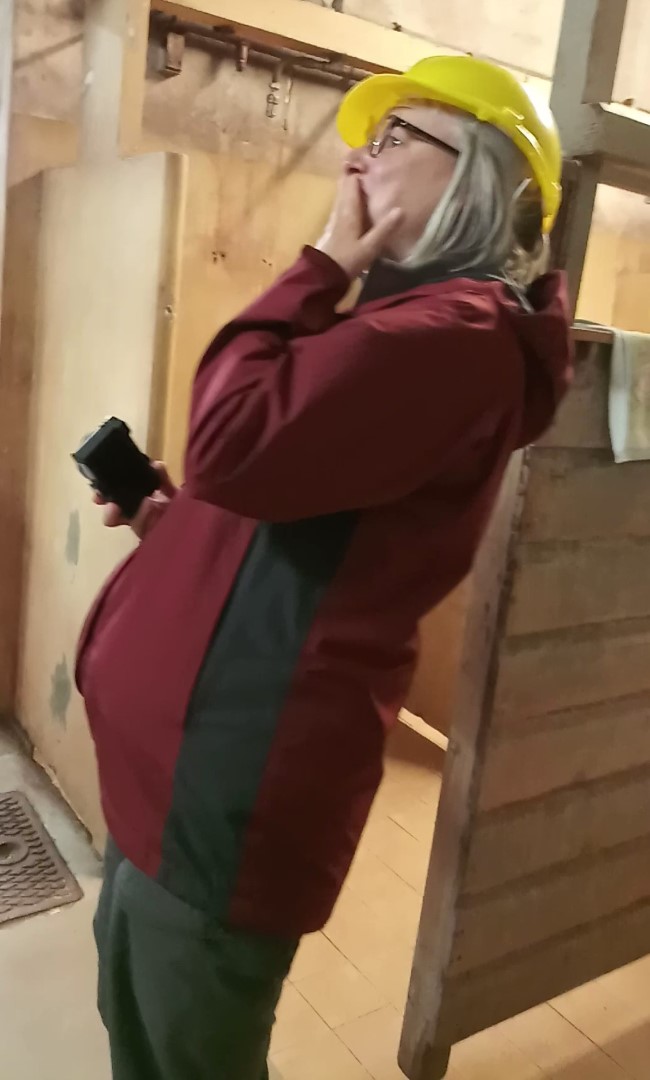
The dummy in the showers proved a bit of a surprise for some!
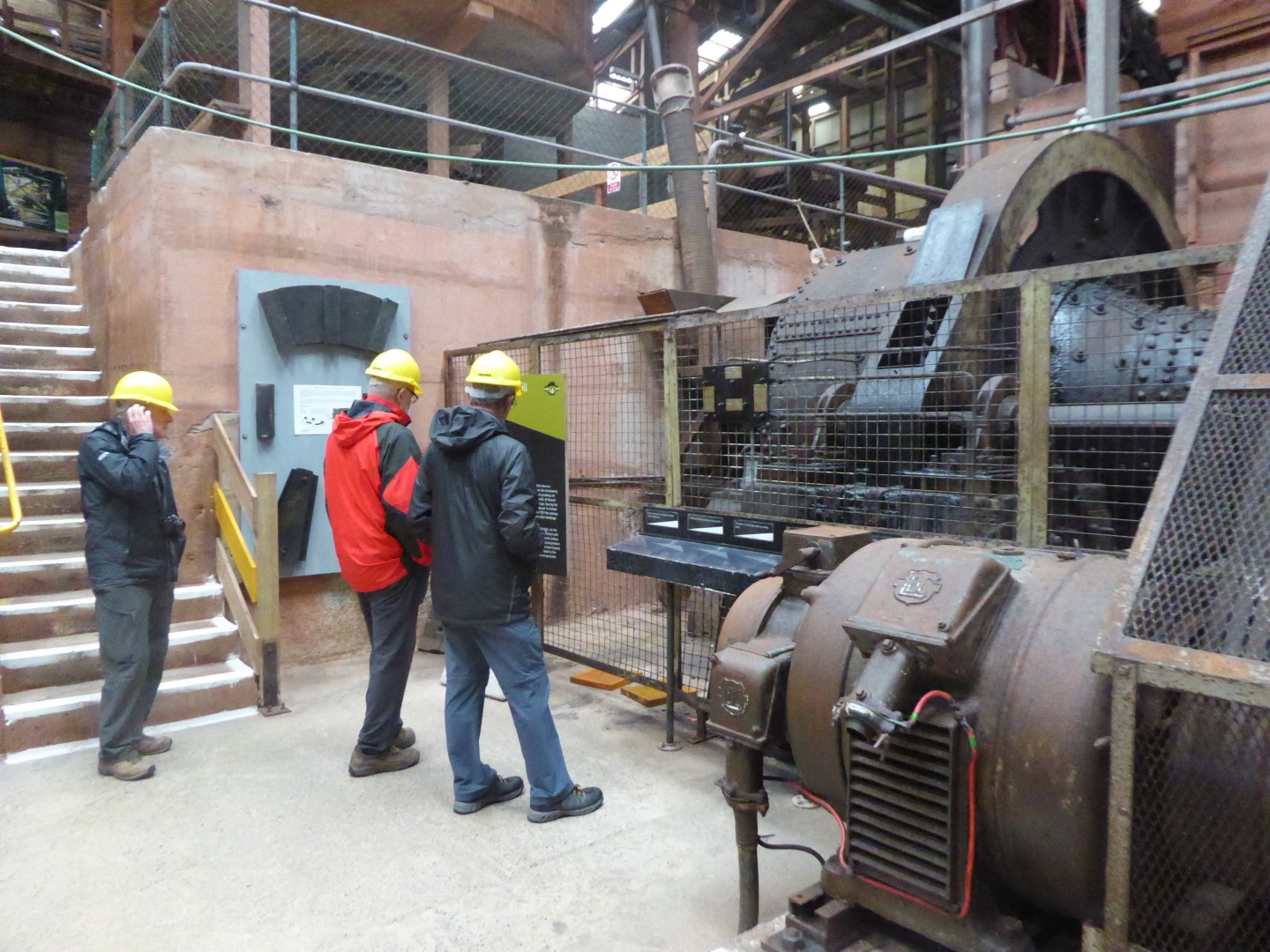
Only 1% of the rock brought up was tin. To find it, the pieces of rock had to be changed to the size of sand particles. Part of this process was in the huge rotating drum where steel balls crushed the rock.
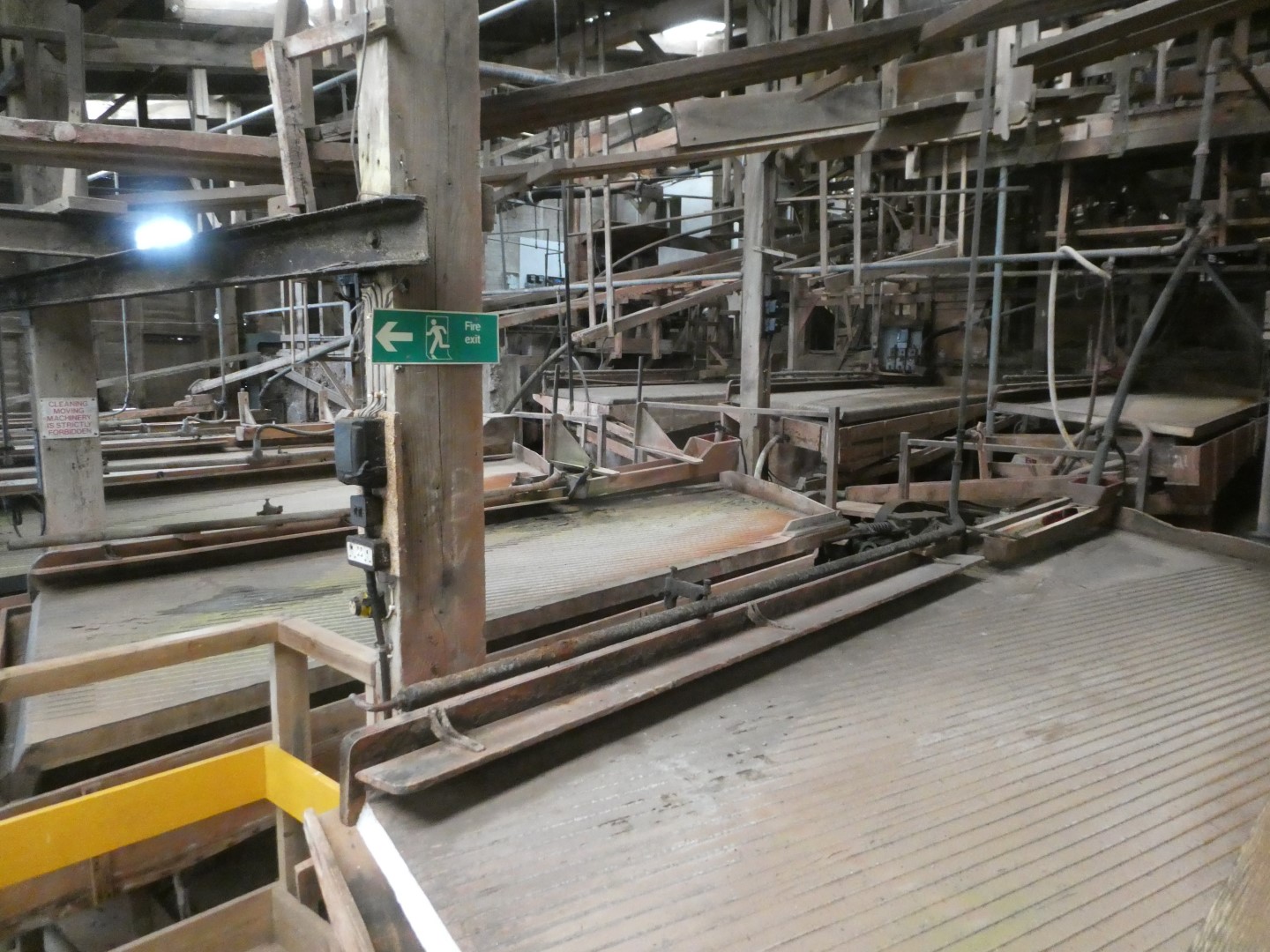
These shaking tables helped separate tin particles from rock. There were originally 90 of these tables in use.
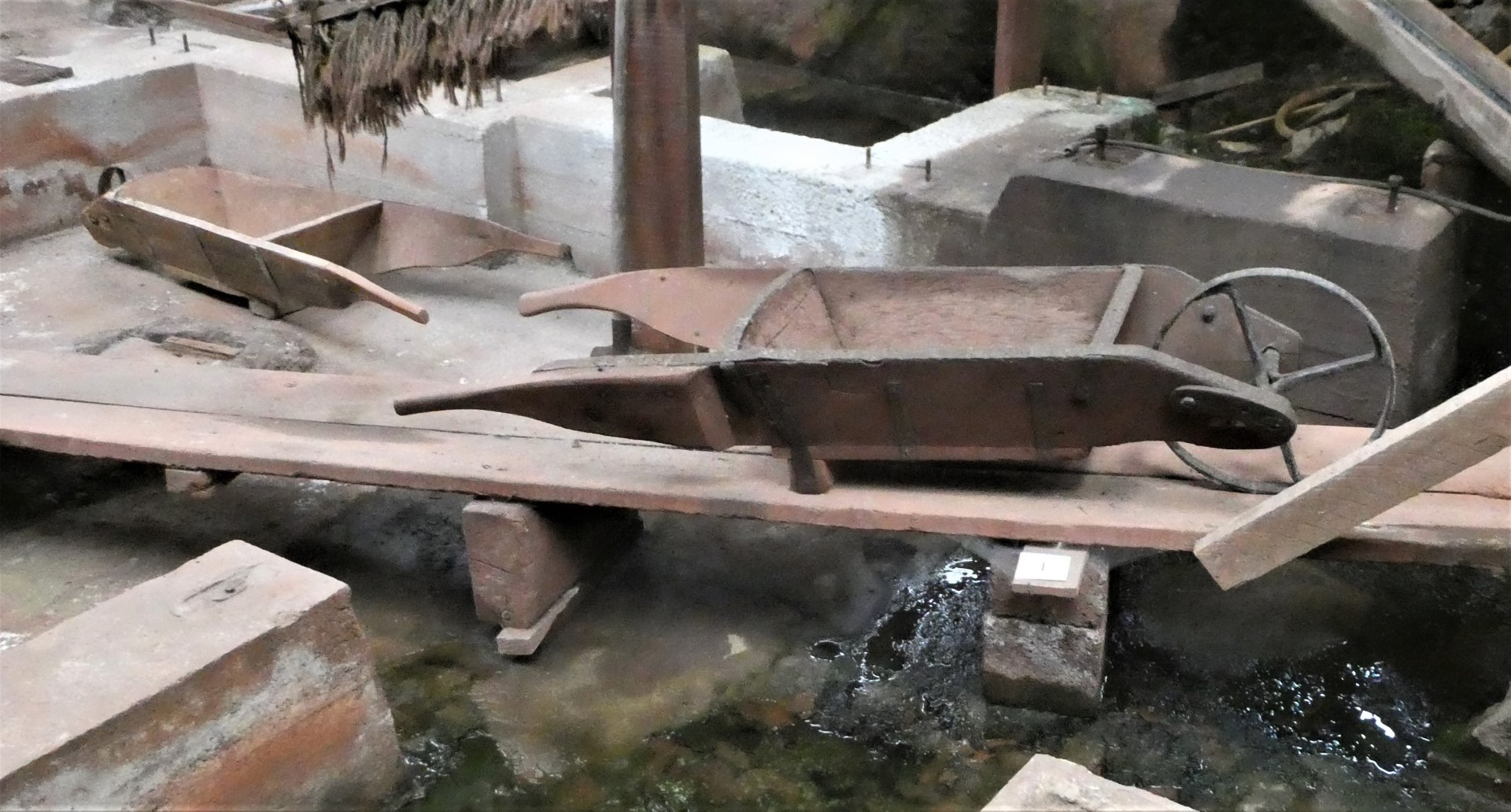
Before compressed air and trucks were installed, all stone was moved underground in carts
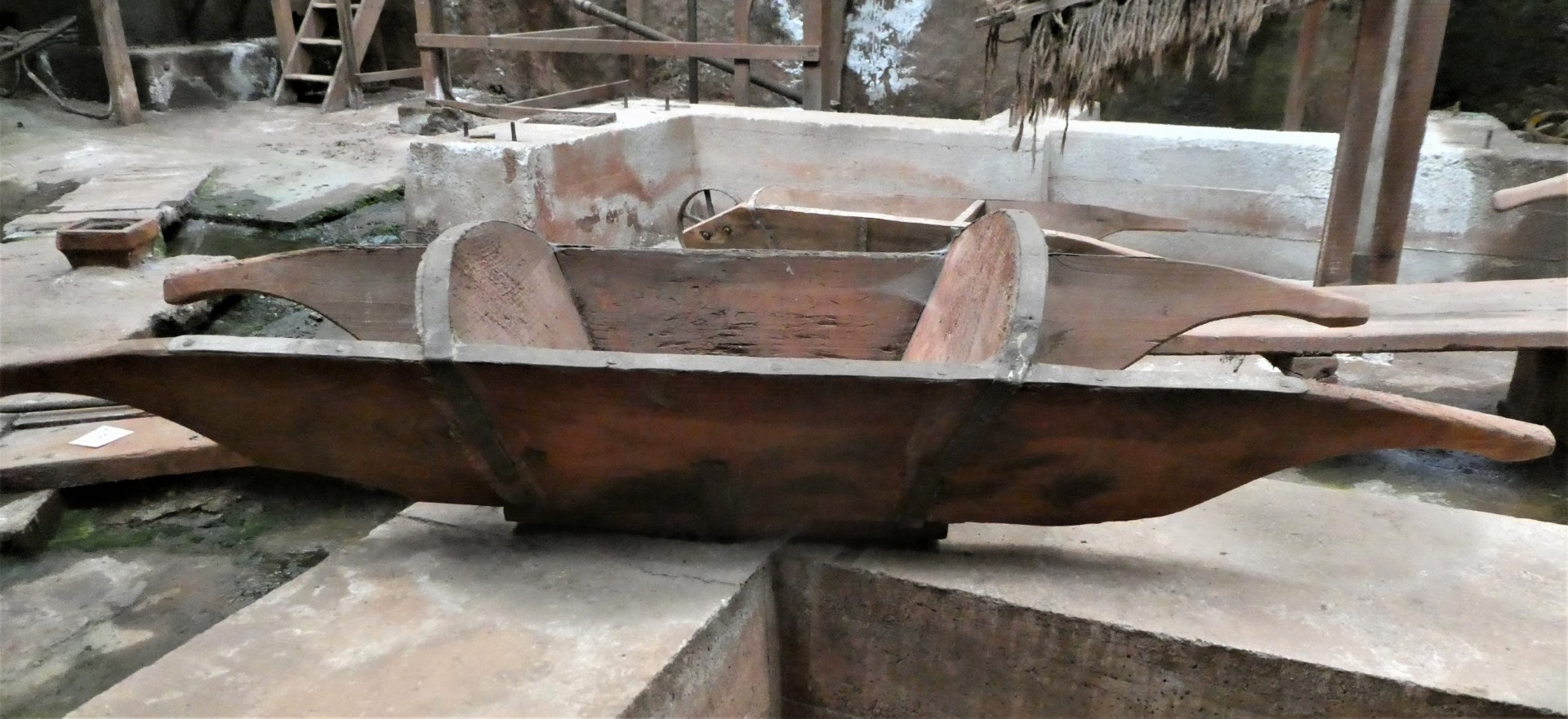
Not always with wheels!
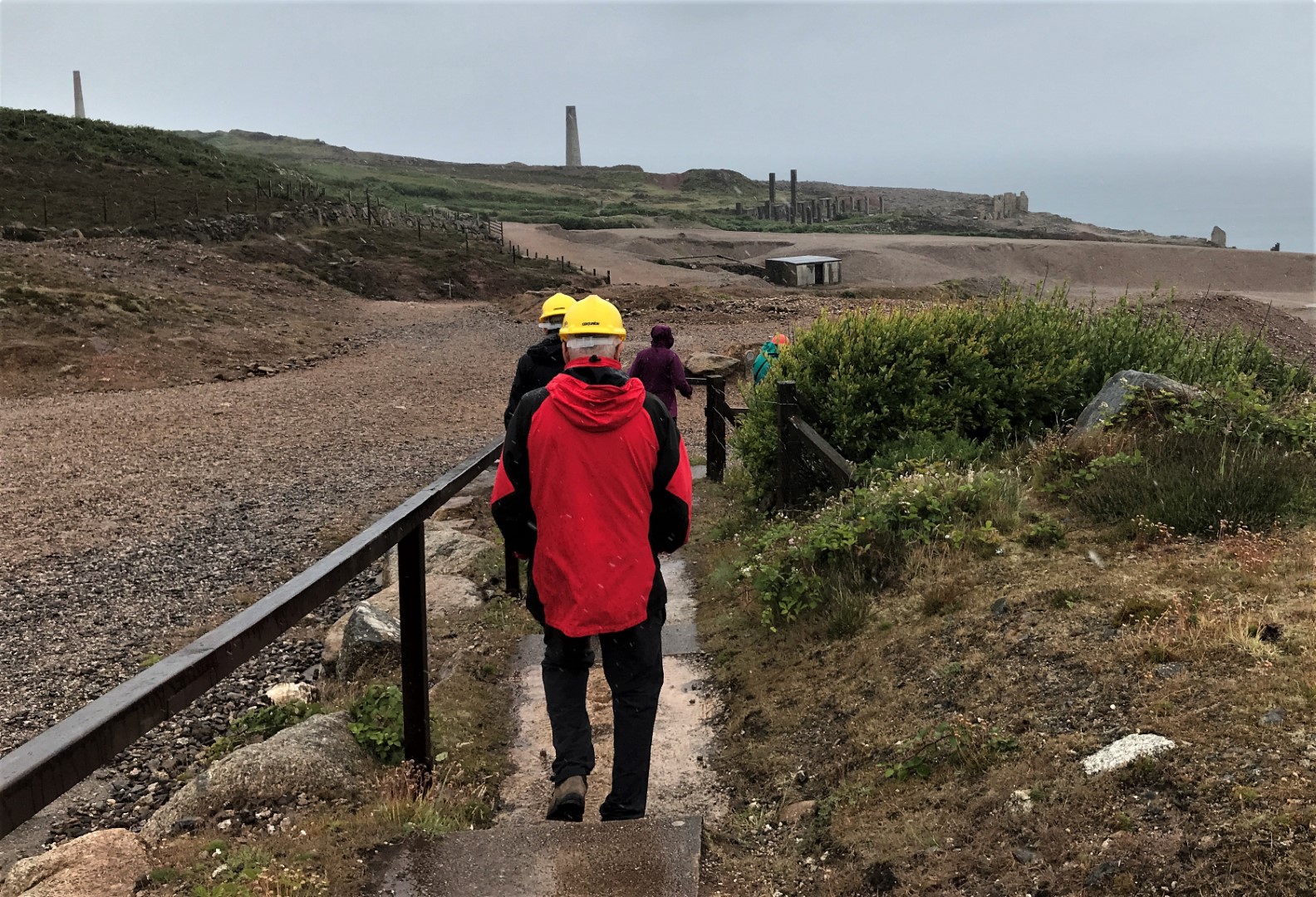
Finding our way down to a very old mine. Miles of this coastline are littered with the history of tin and copper
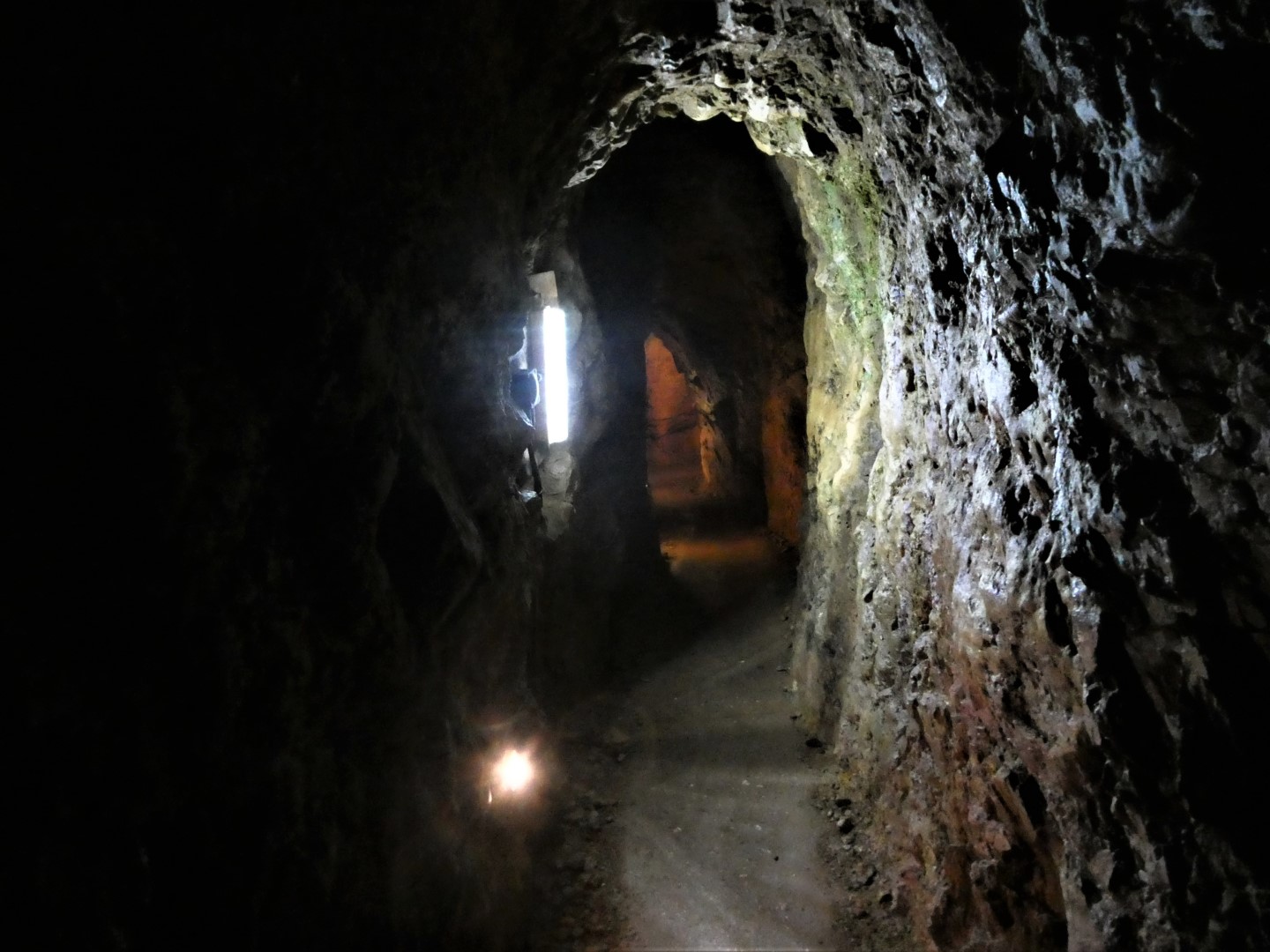
This is inside the 18th century Wheal Mexico Mine
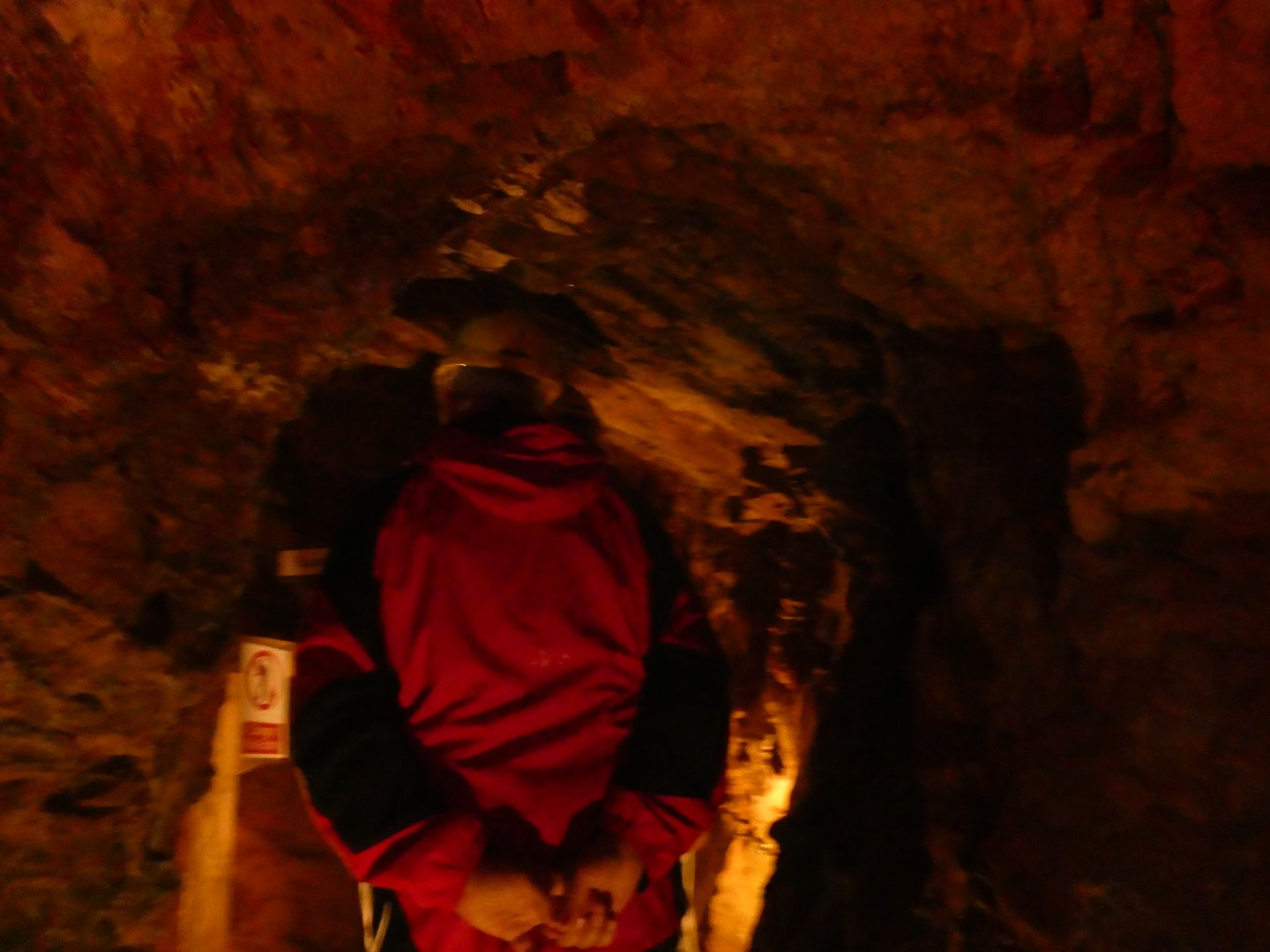
Careful, mind your head
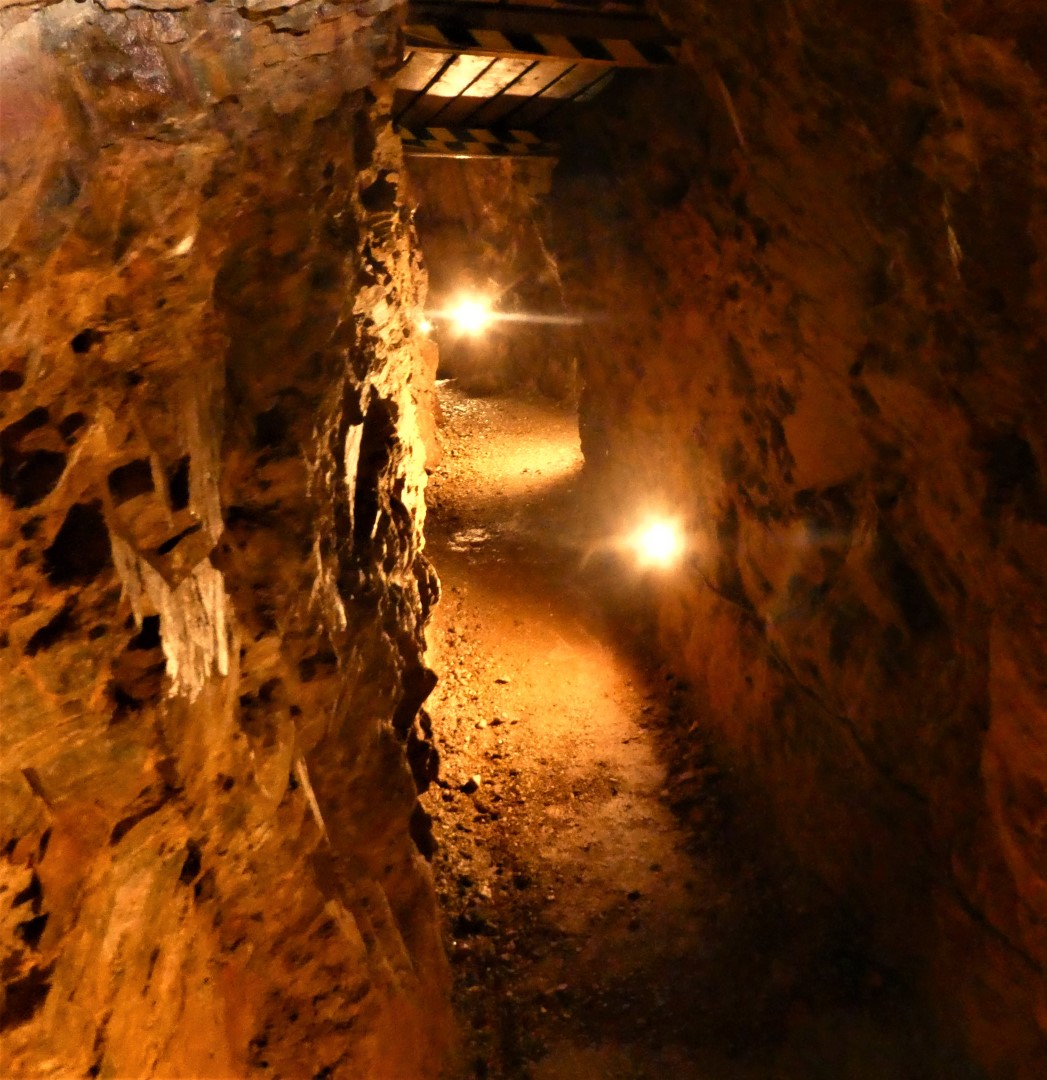
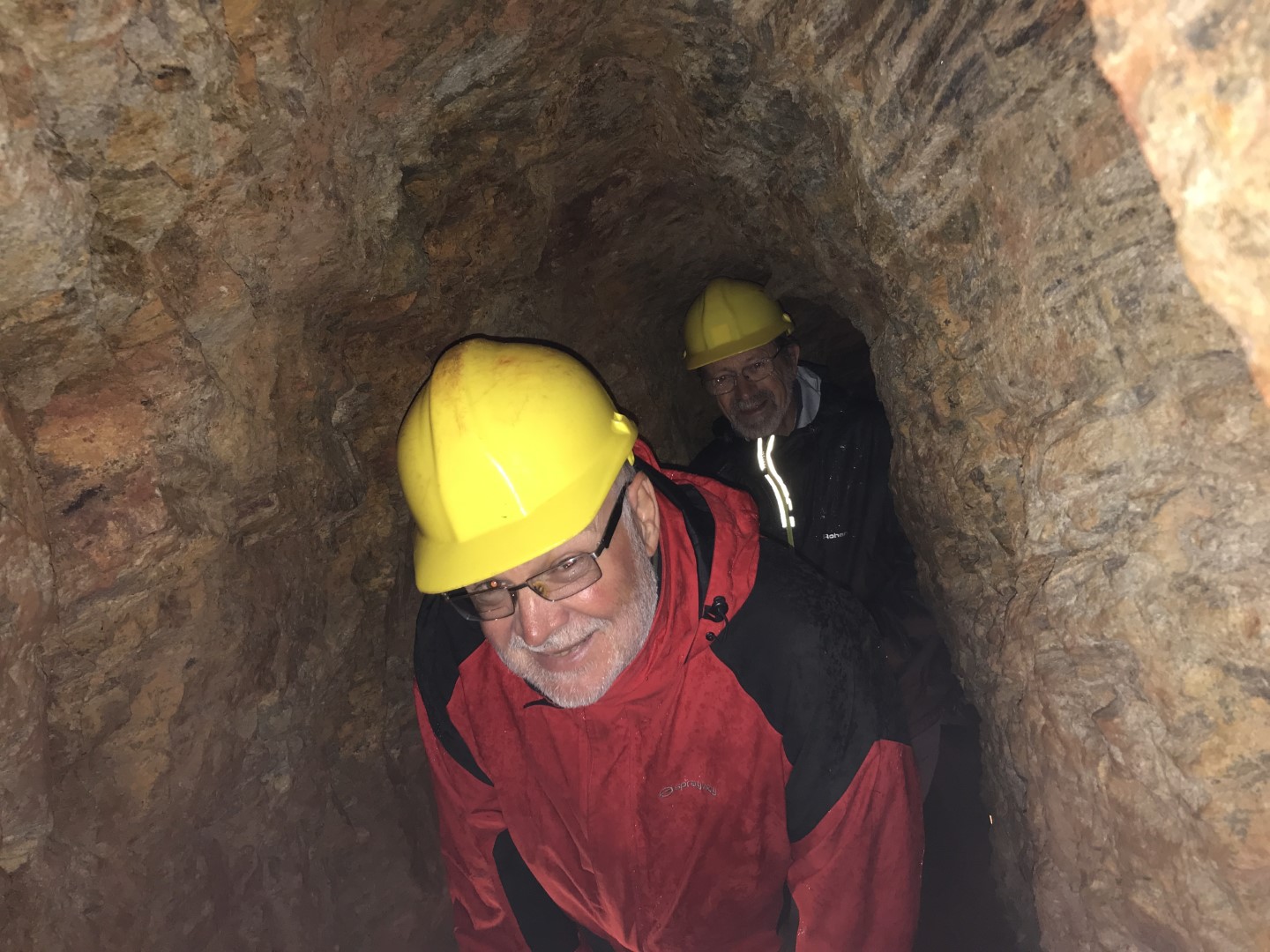
Two miners just coming off their shift
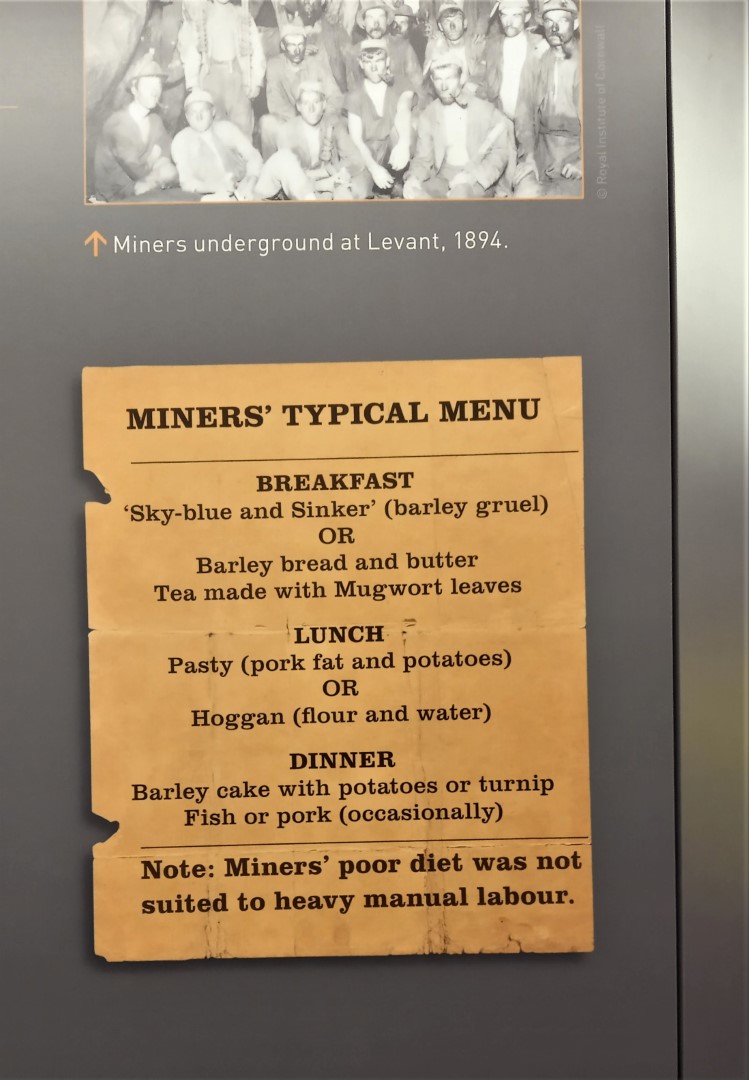
Luckily we had a packed lunch from HF
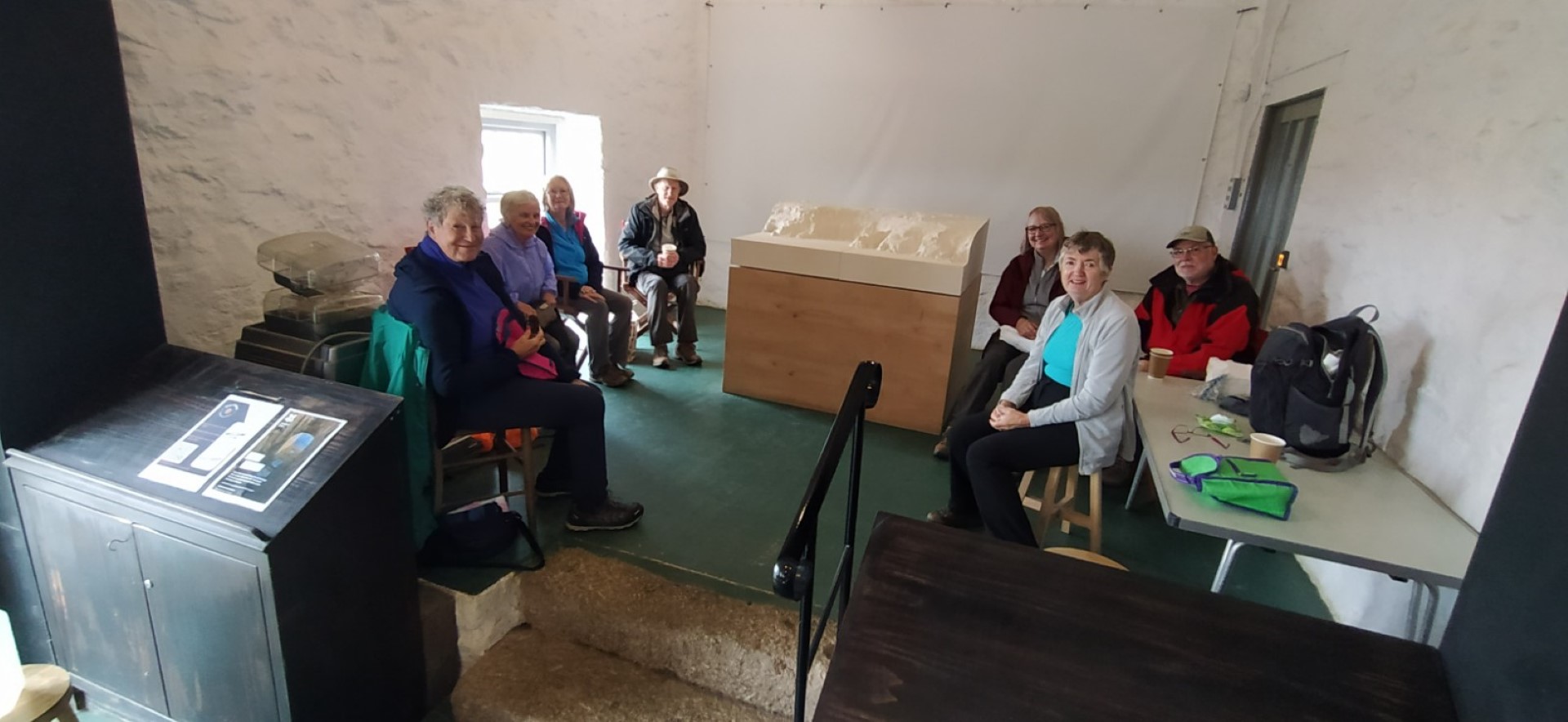
Lunch in the "Poldark Mine" Count House
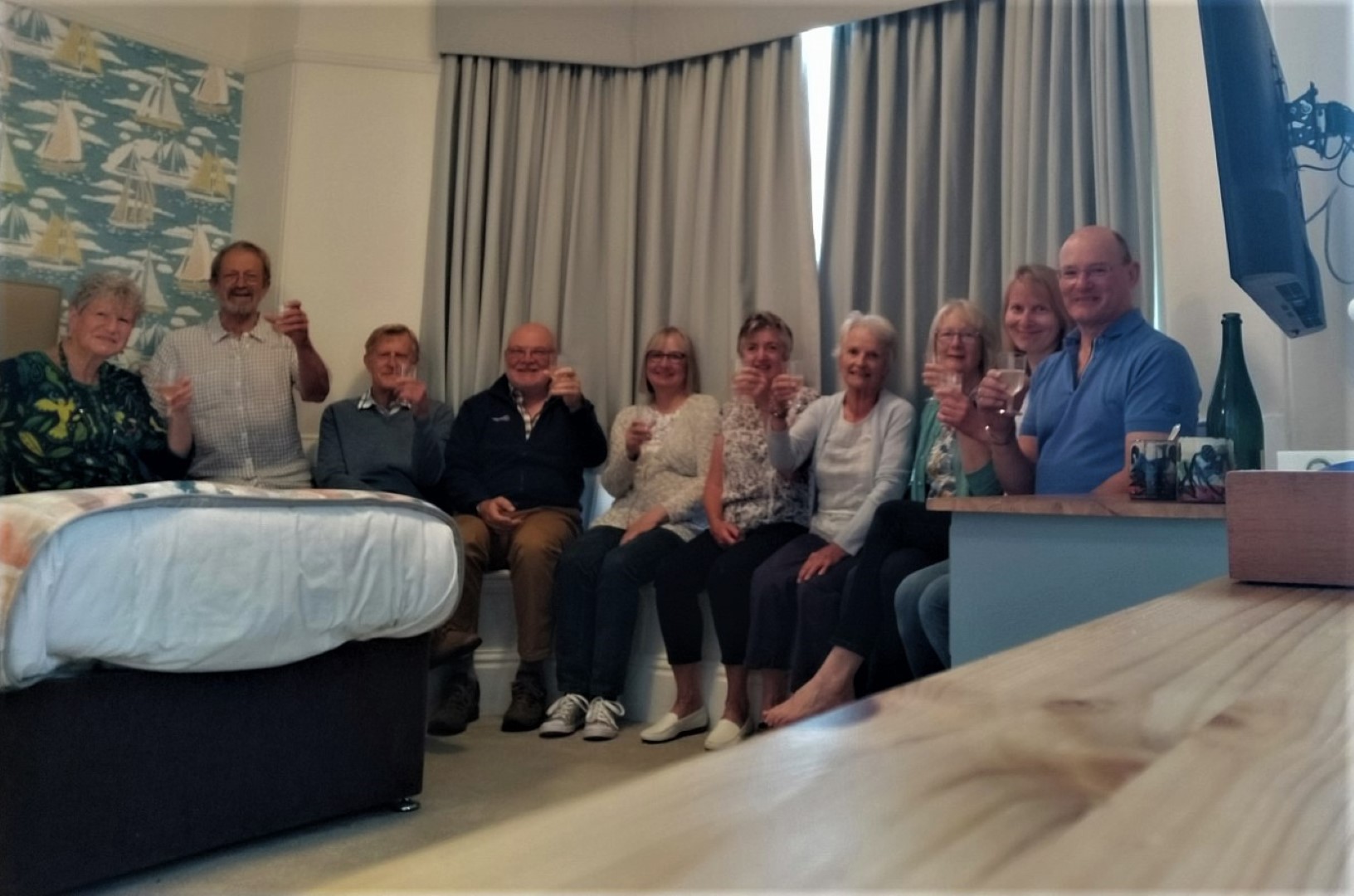
After a hard day down the mine, we felt we deserved a wee drink
St Ives Holiday Land's End walk Monday 27th June 2022
Jennifer's idea of catching a bus from Porthcurno to Land's End proved very successful. The open top bus took us to our walk start point in about 20 minutes and we didn't waste too much time on a very commercialised Land's End. The man doing photos at the Land's End Signpost suggested we look for holes and gaps in rocks on our journey south. We saw many along our route! The path we took followed the coast southwards, sometimes a little too closely for the nervous! A few seal sightings, many guillemots, gulls and terns, some domesticated animals gave us plenty of entertainment and there was also an adder seen quickly crossing our path. The going was mostly good and the hills and valleys seemed to be a little kinder than the previous day. We eventually dropped down into Porthgwarra where we found a pleasant coffee/ice-cream stop before taking the final hike back to the car park in Porthcurno. The walk was a little under 6 miles, sunny with a reasonably strong westerly wind, but very good conditions overall.
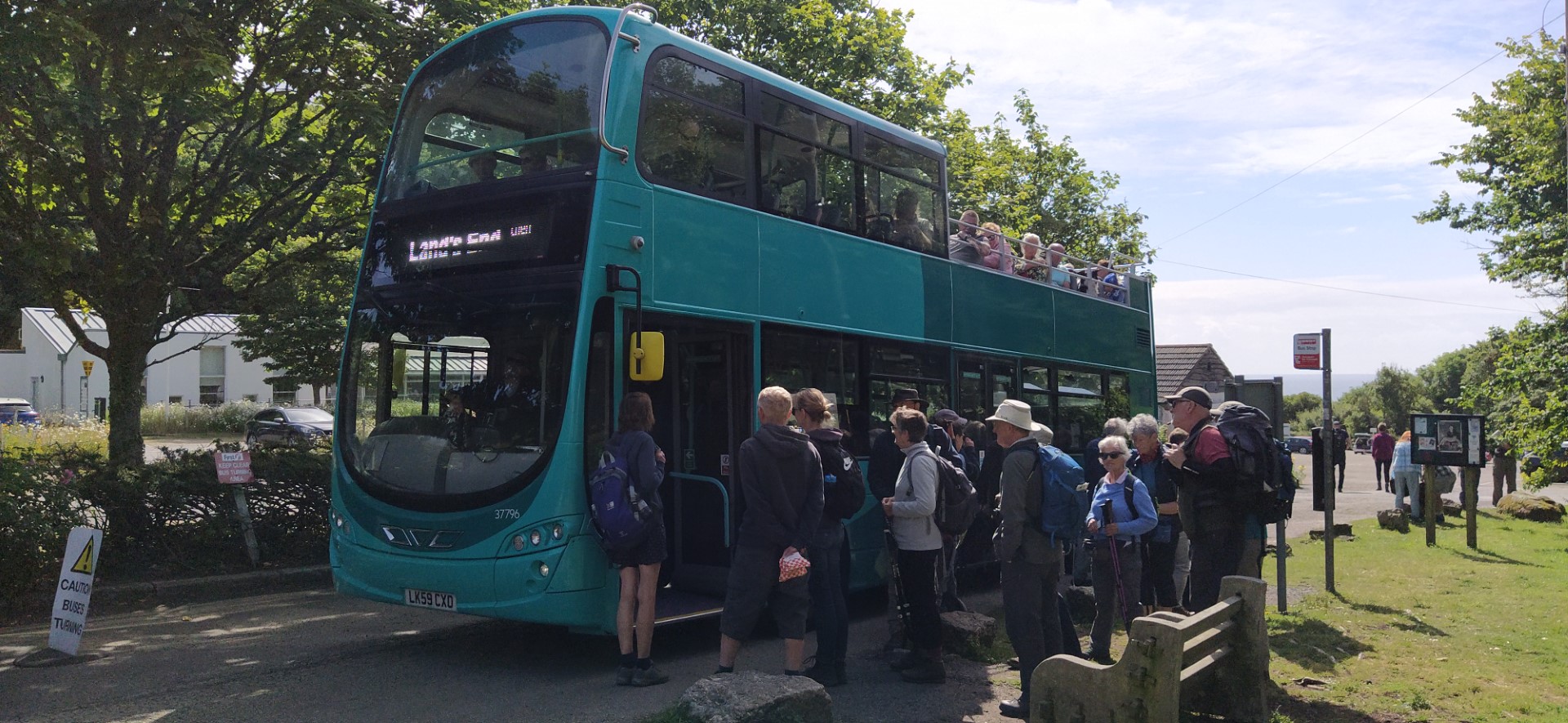
Catching the bus at Porthcurno
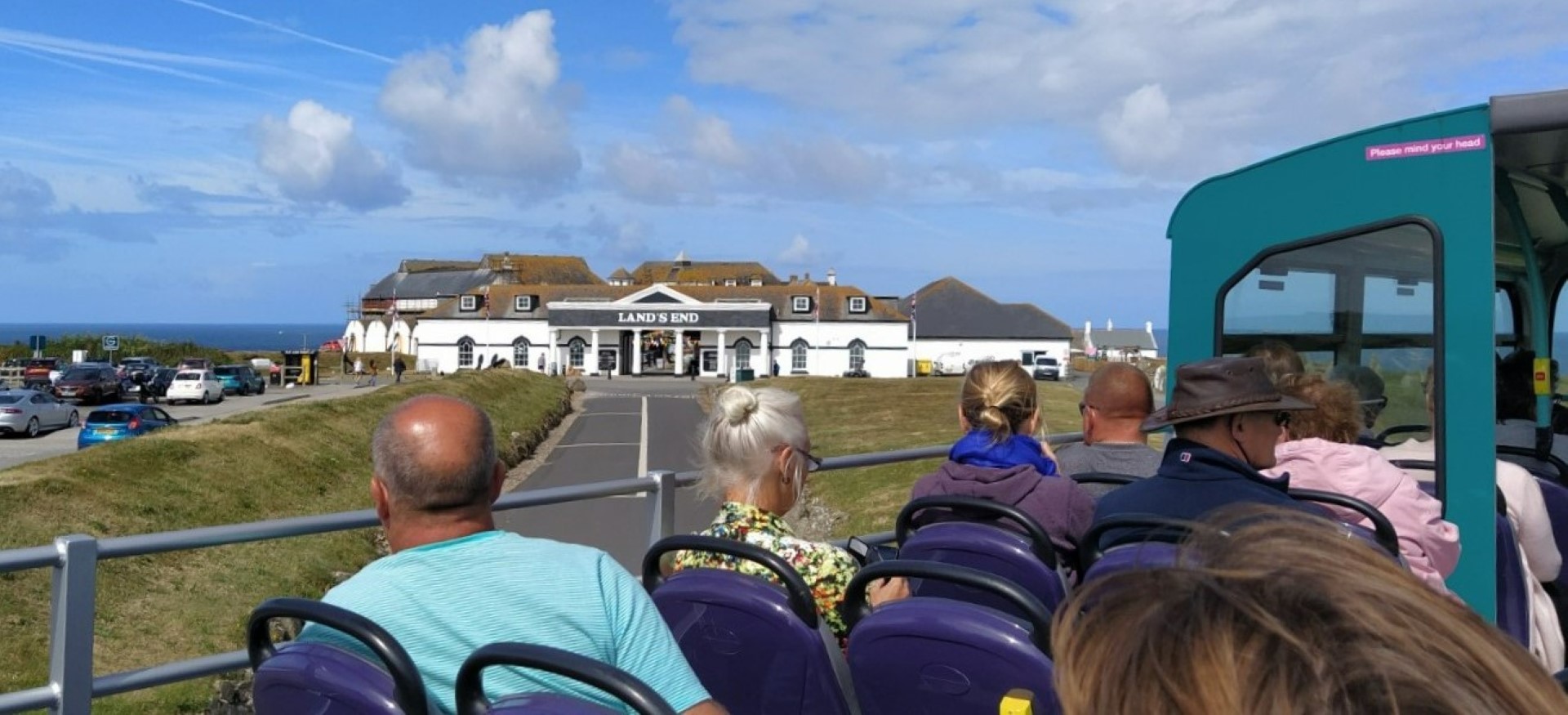
Twenty minutes later - Land's End!

That's nice - they've put the flags out for us!
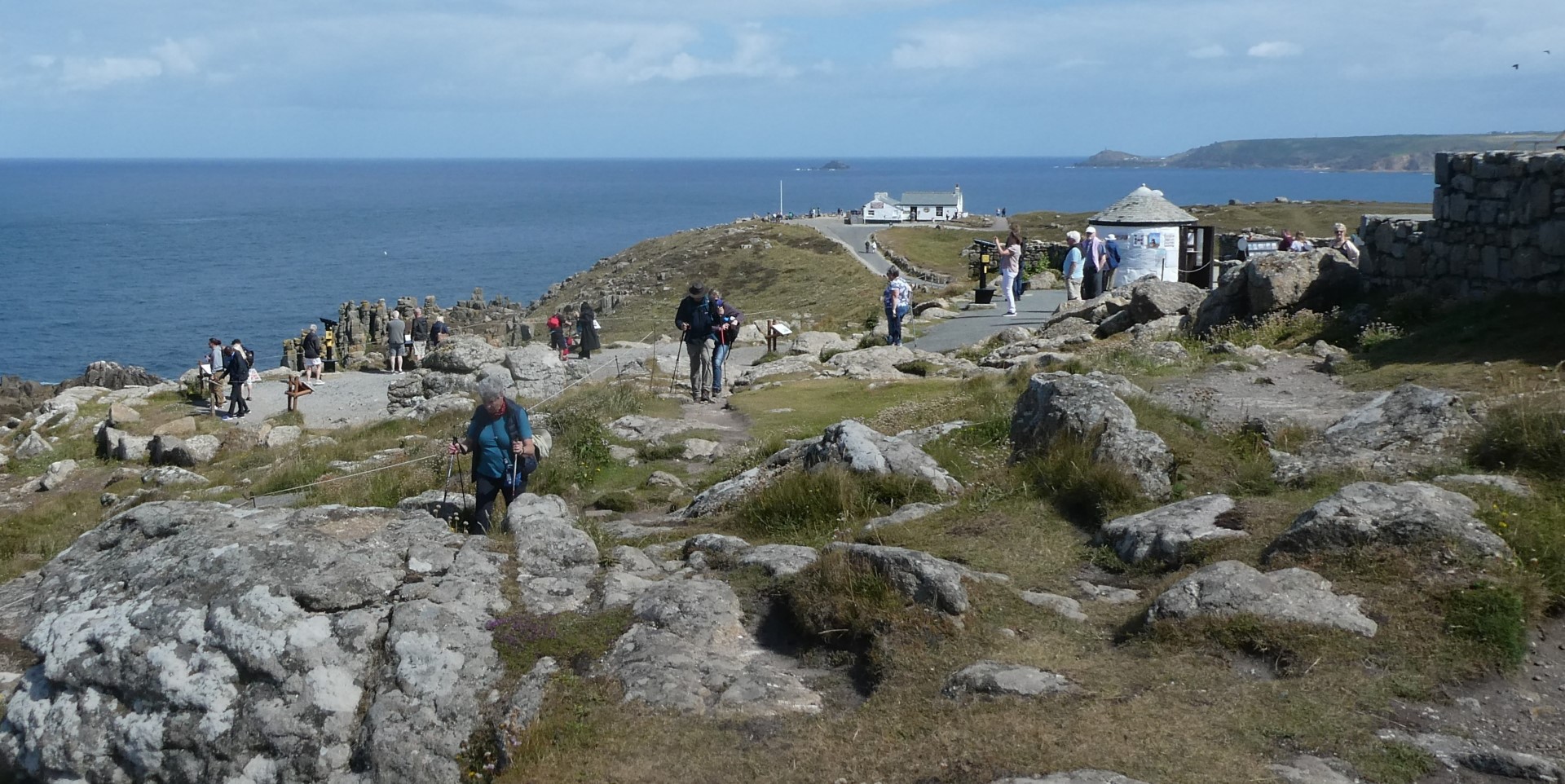
Heading south
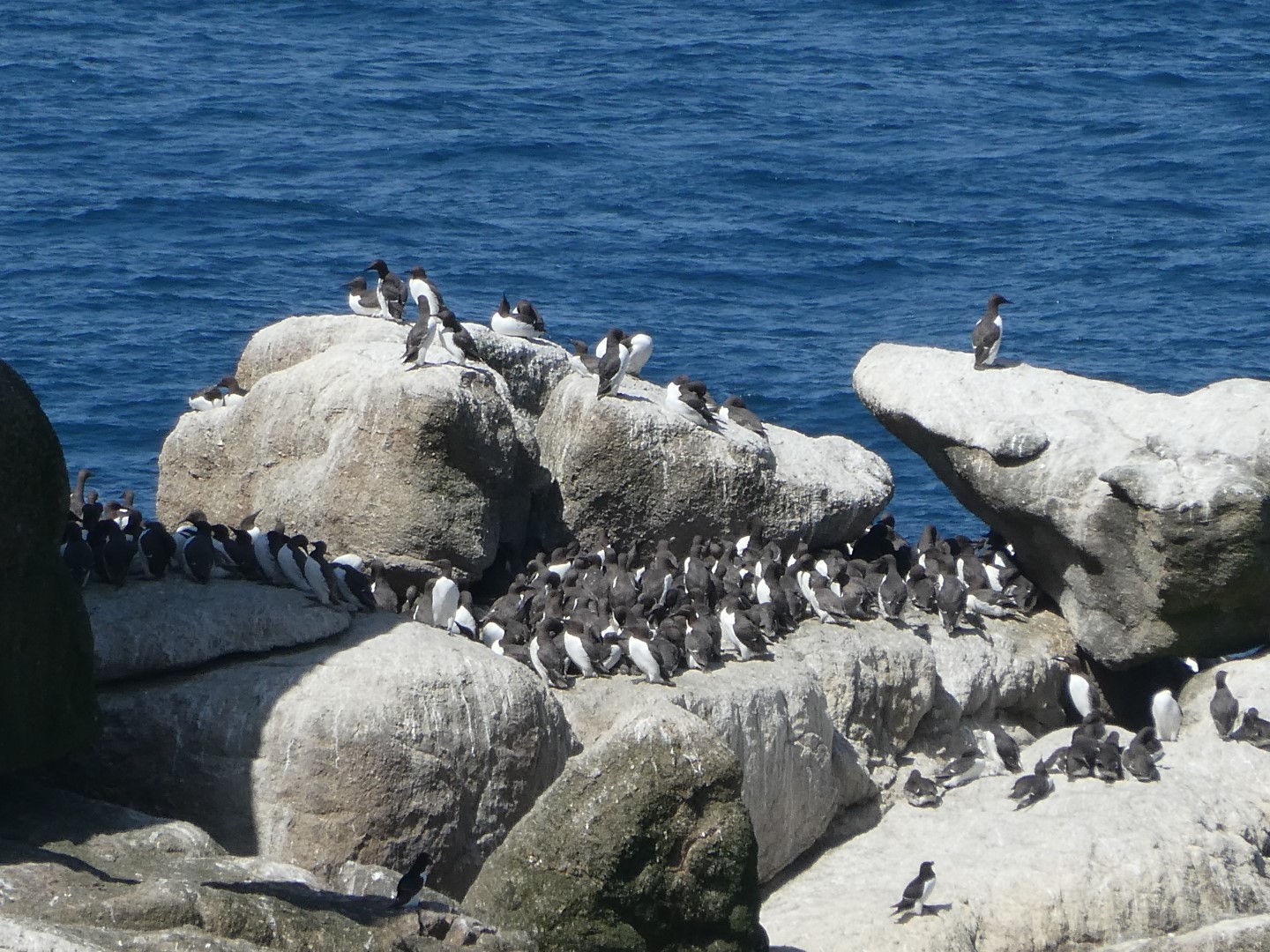
Guillemots resting
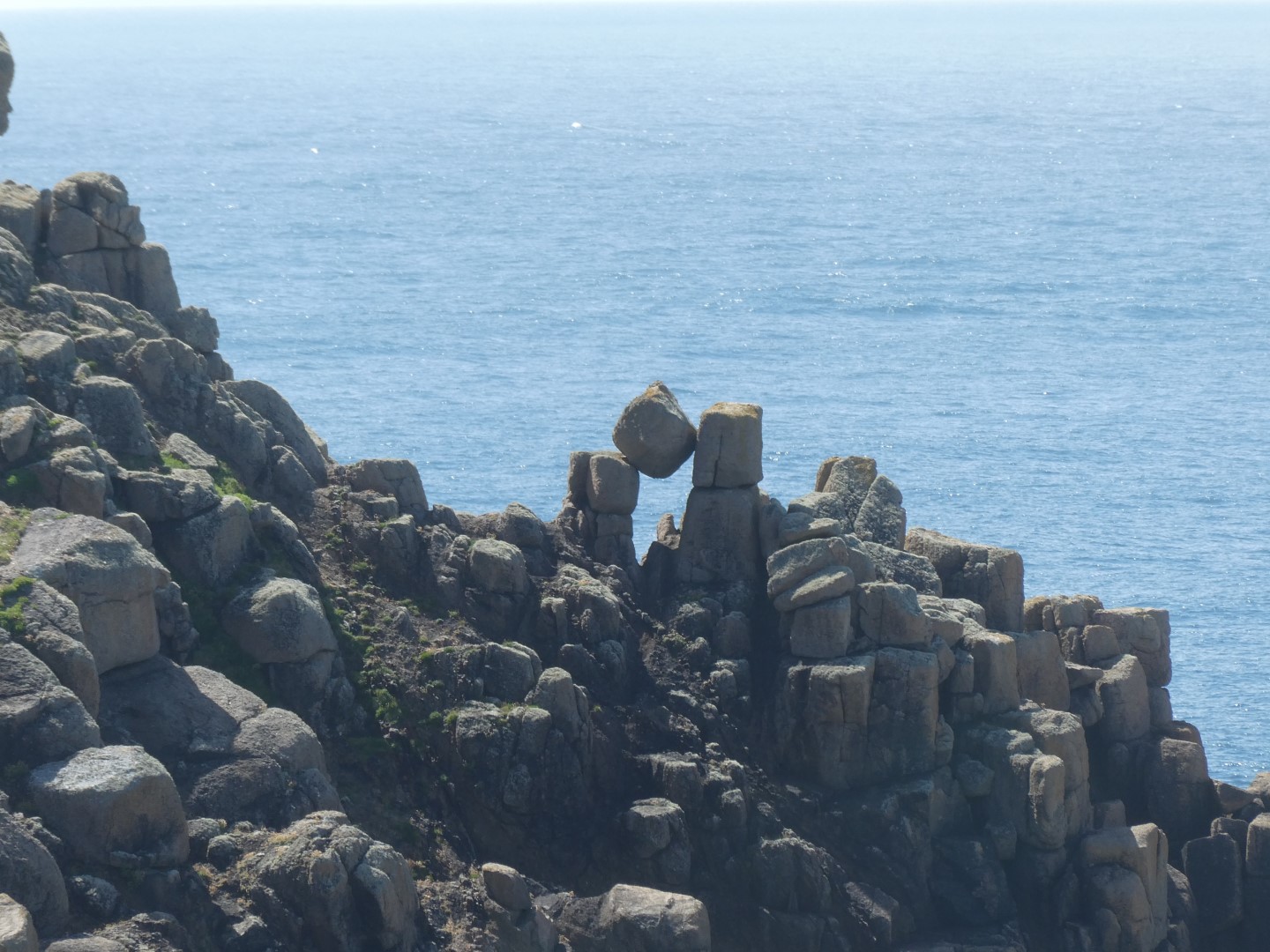
Plenty of rocks on this coast
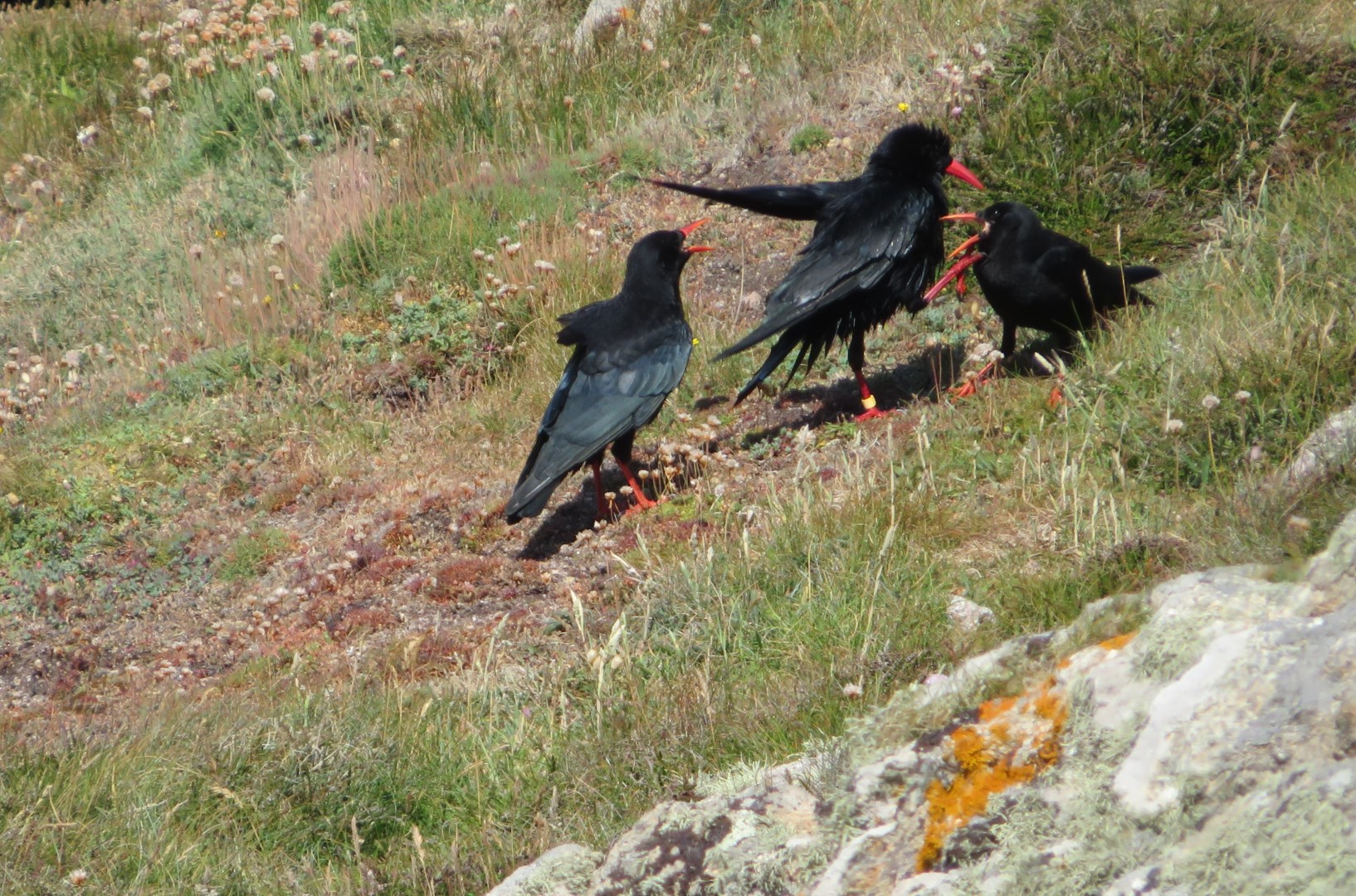
Choughs first returned to Cornwall in 2001 and there are now several small breeding groups

Good paths most of the way.
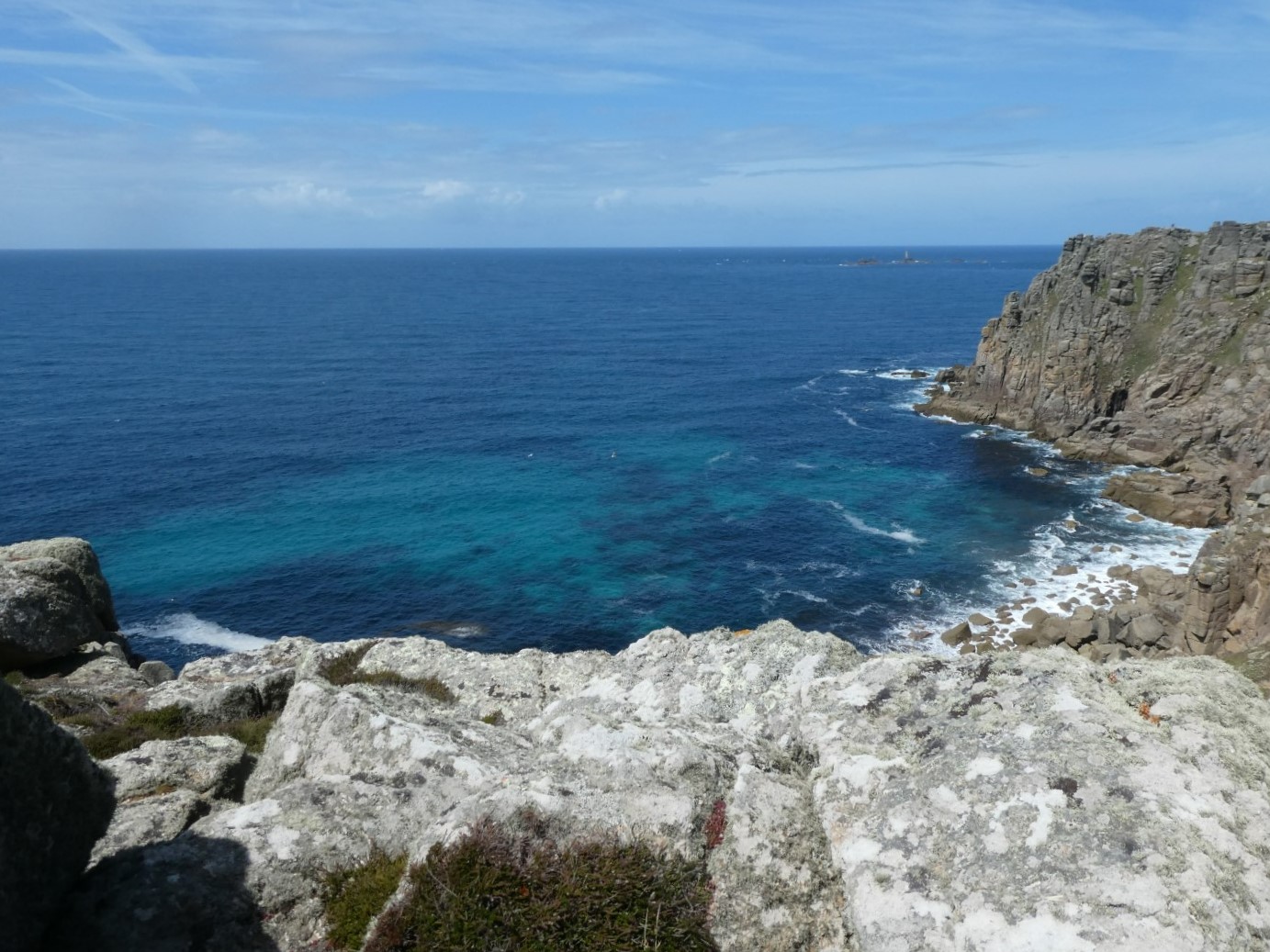
Beautiful cliffs and sea colours all morning
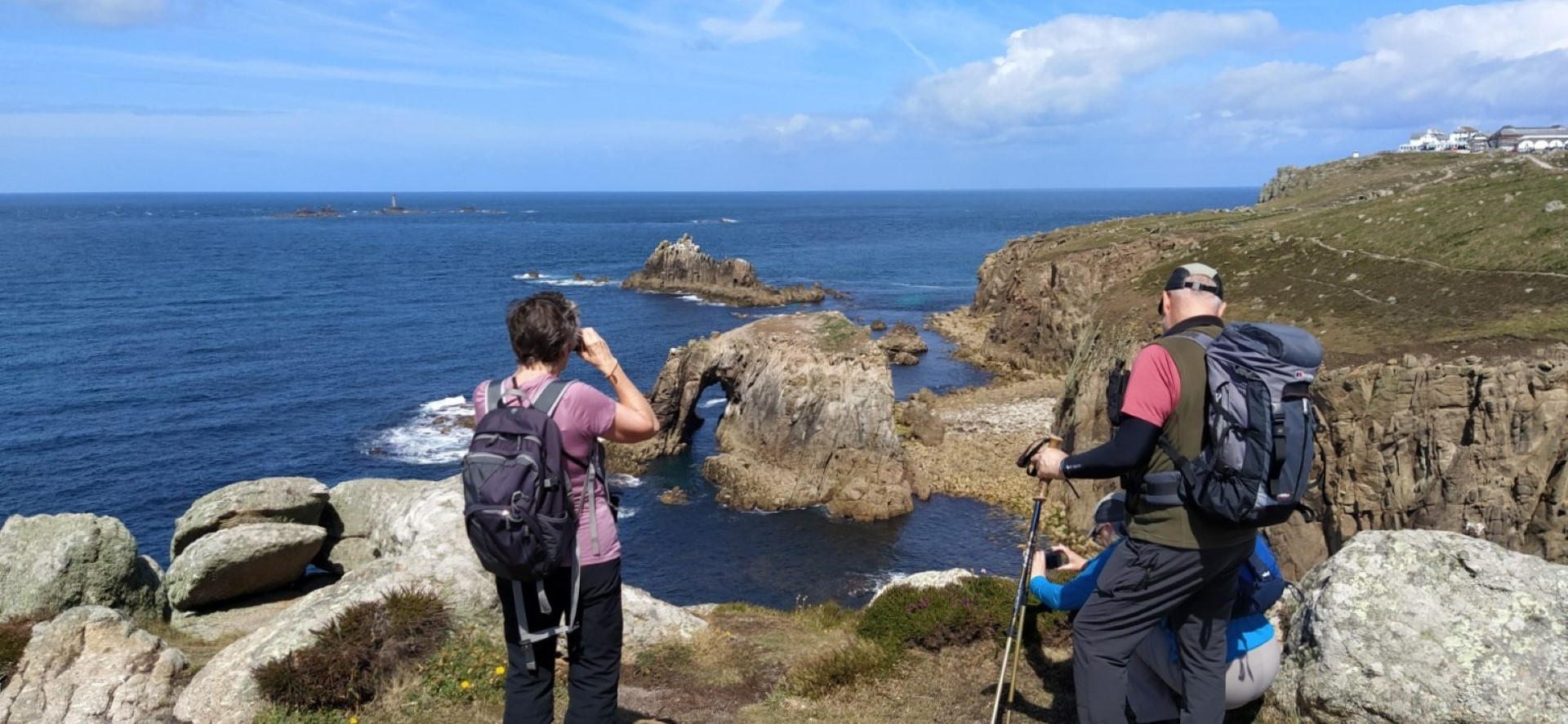
That's the rock with a hole

Carefully balanced boulders soon to slip?

Luckily we had a volunteer to keep this rock in place
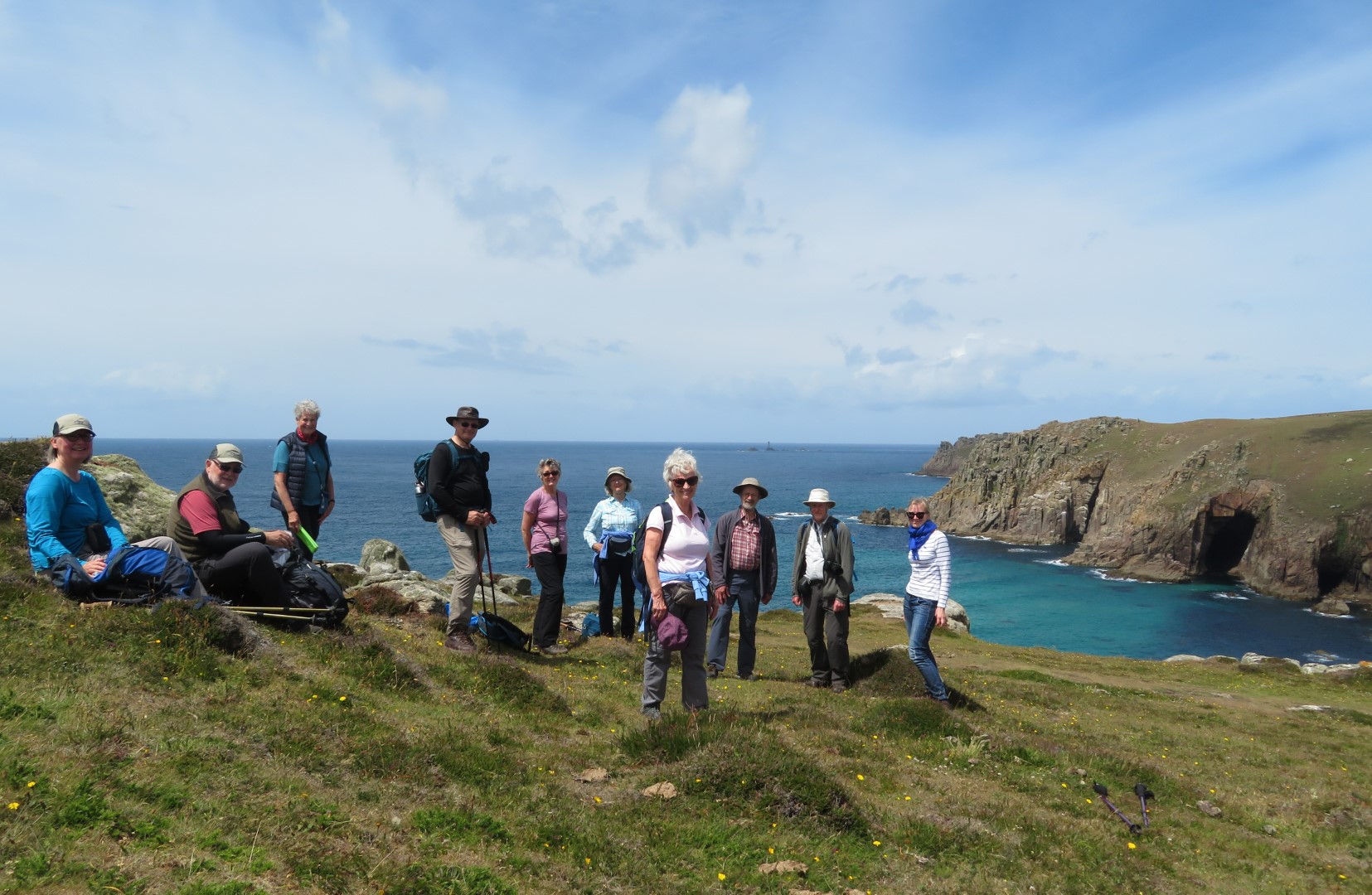
Nice spot for a drinks break
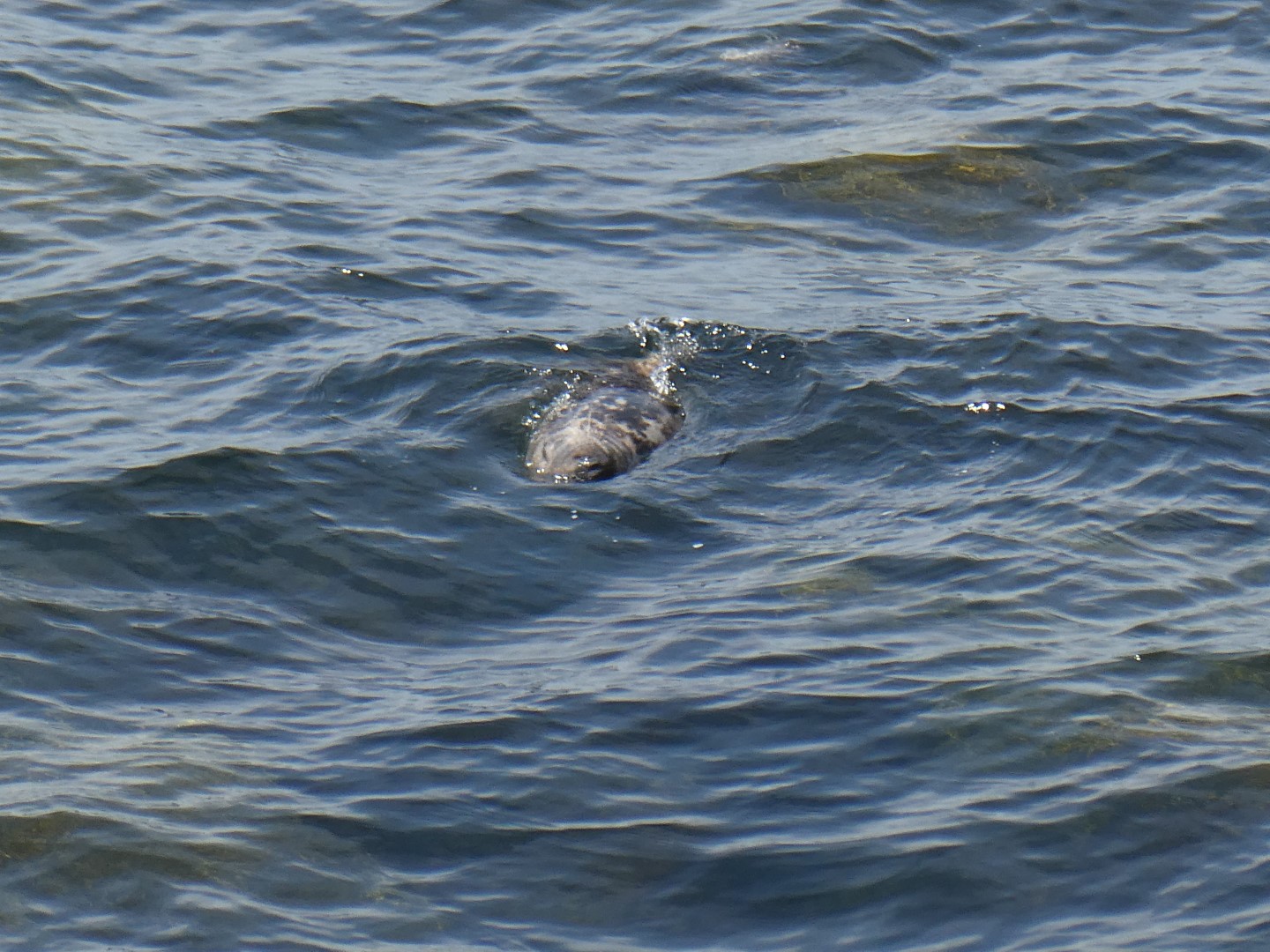 .
.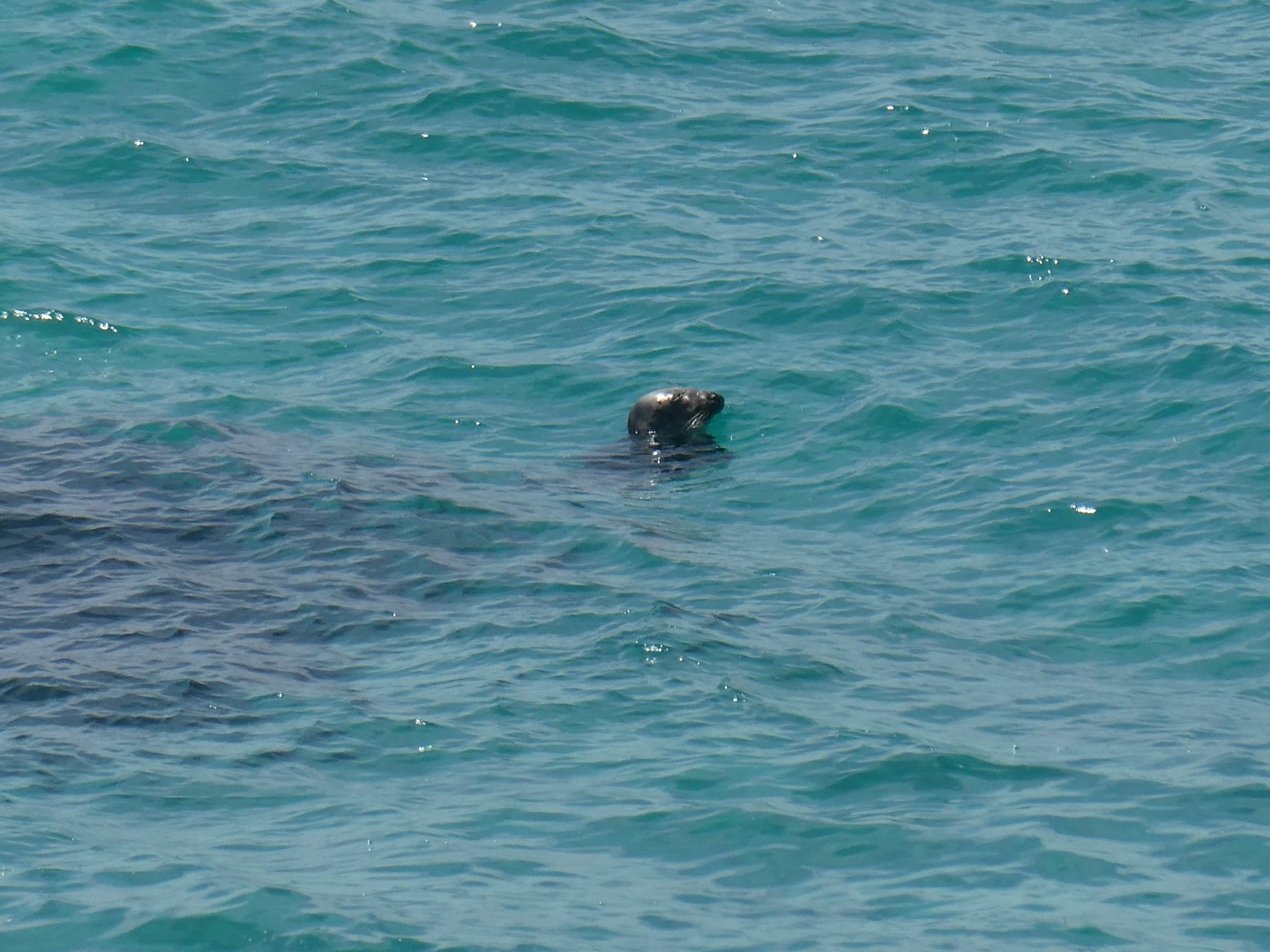
and a bit of seal spotting
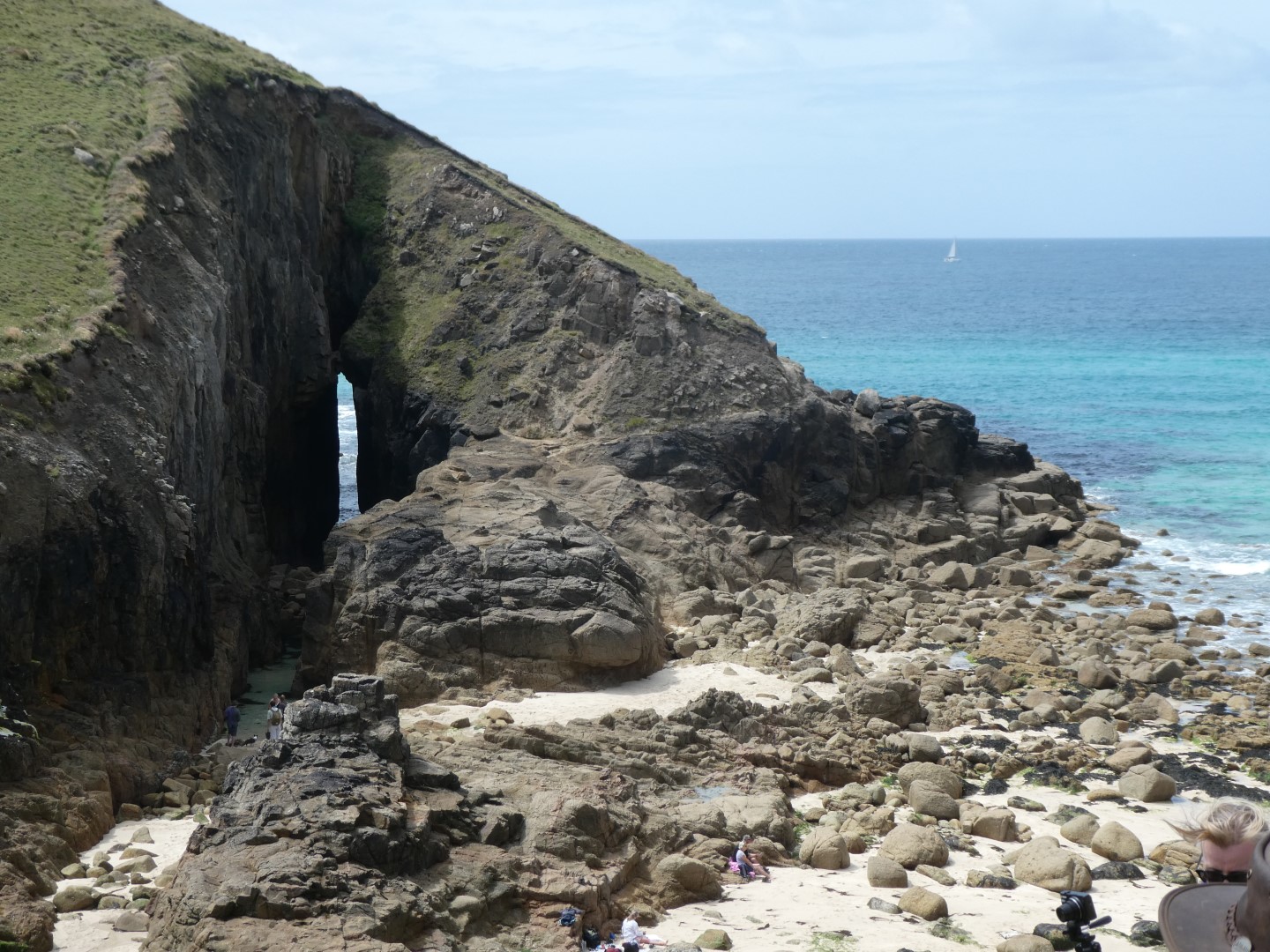
More holes in rocks
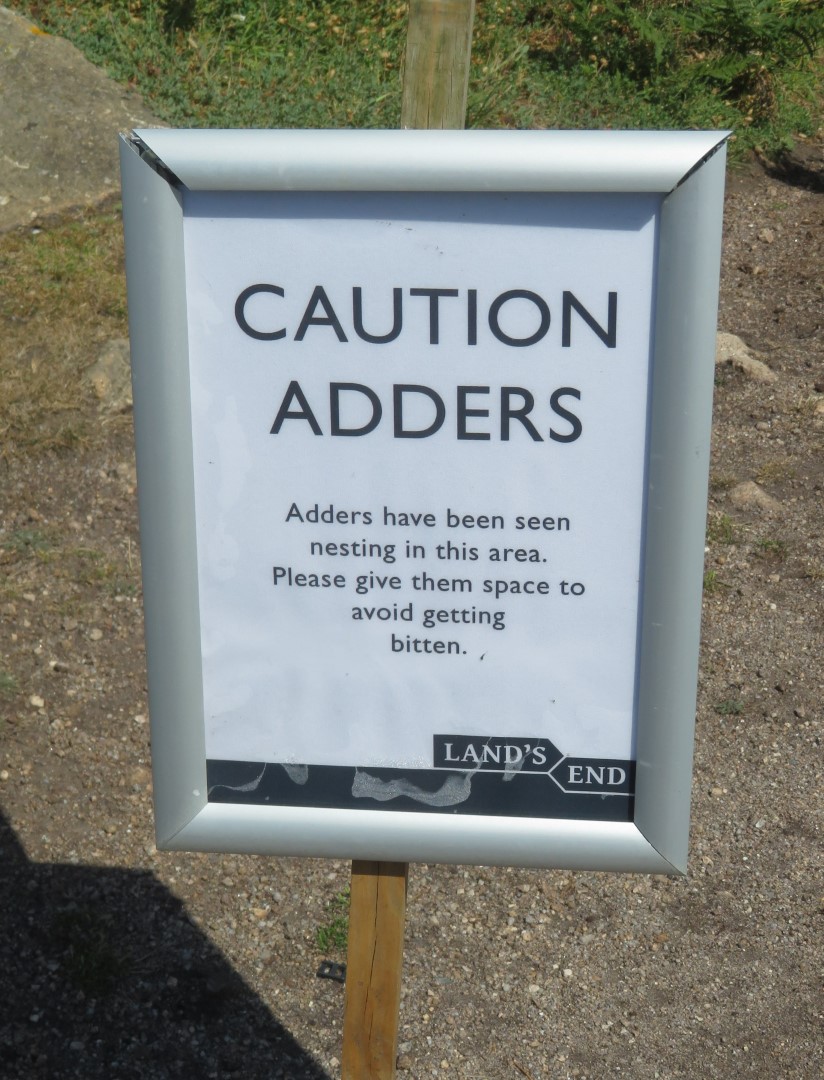 .
.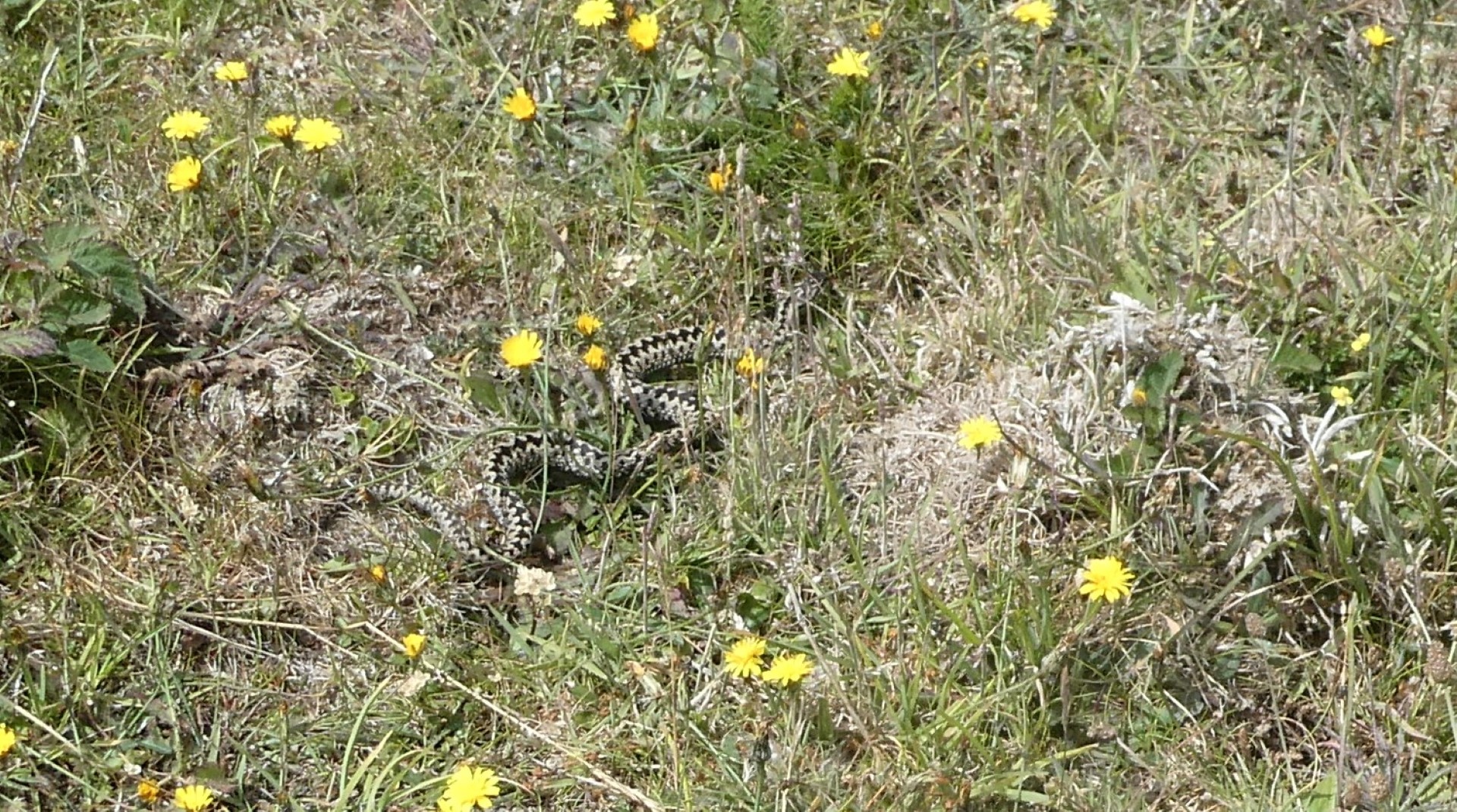
Adder wouldn't pose at all well
.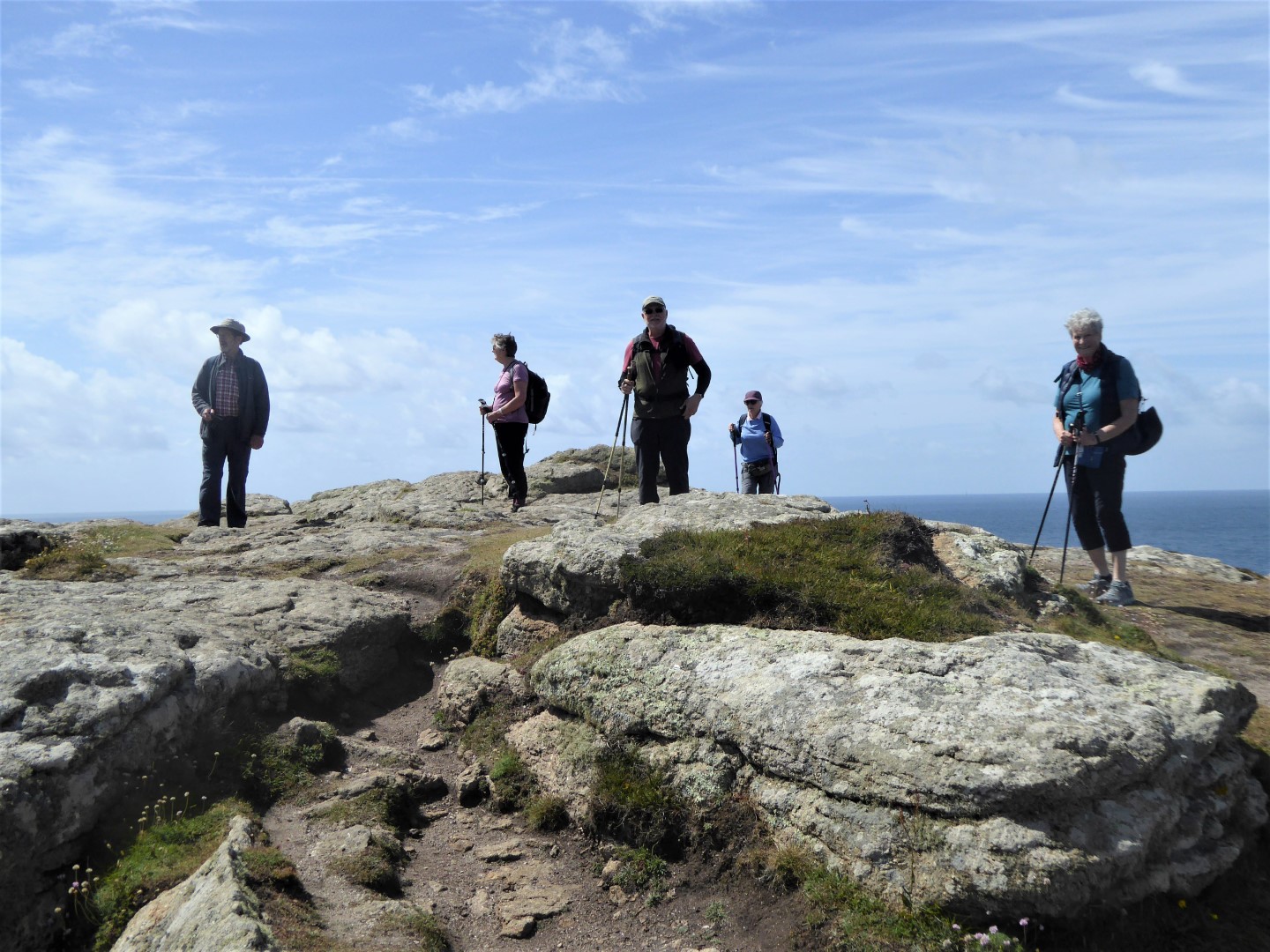
Just about to go downhill

Porthgwarra, for an ice-cream
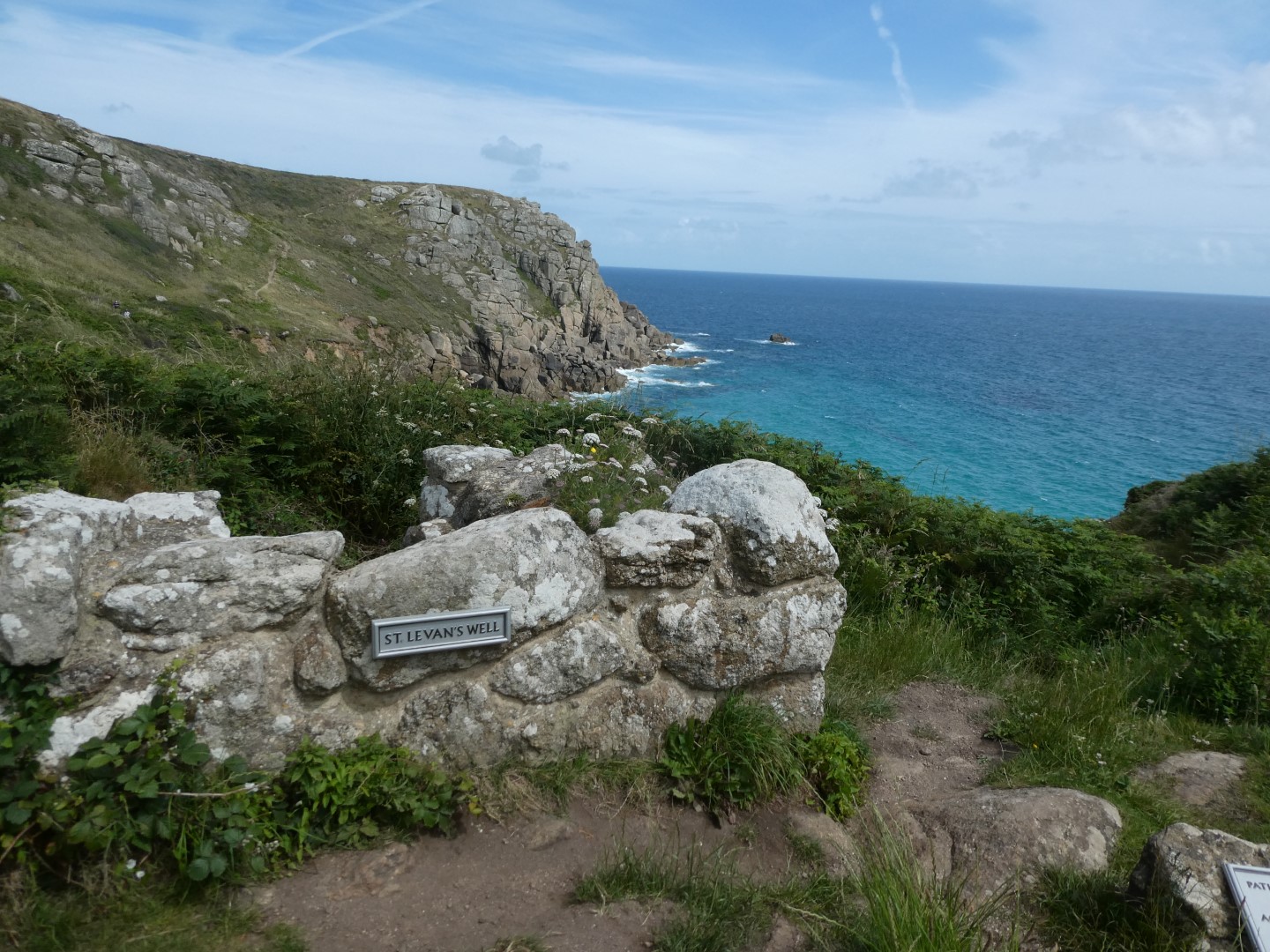
St Levan's Well. The water may cure toothache and eye diseases. Cure rate supposedly increases if you stay in the well overnight.
St Ives Holiday Lizard walk Sunday 26th June 2022
Our first walk was from the little village of Lizard, about a mile from the southern most point of mainland England. We called in at the Lighthouse for a coffee before walking to the end of England. From there it was a walk along the cliff top to Kynance Cove, where we stopped for our packed lunch on the grassy bank overlooking the Cove. Appetites satiated, we took a shorter route back to the village, which included walking along the top of a Cornish hedge. Not quite so difficult as it sounds as Cornish hedges are 2 stone walls with a gap in between filled with soil. With an afternoon to spare most of us went back to the lighthouse for a guided tour, becoming much wiser to the difficult seas around the Lizard, as well as the workings of Trinity House. The walking was in excellent conditions with lots of sun but a good breeze to stop us getting overheated. The walk was a little under 5 miles but seemed much longer with the rarely smooth paths!
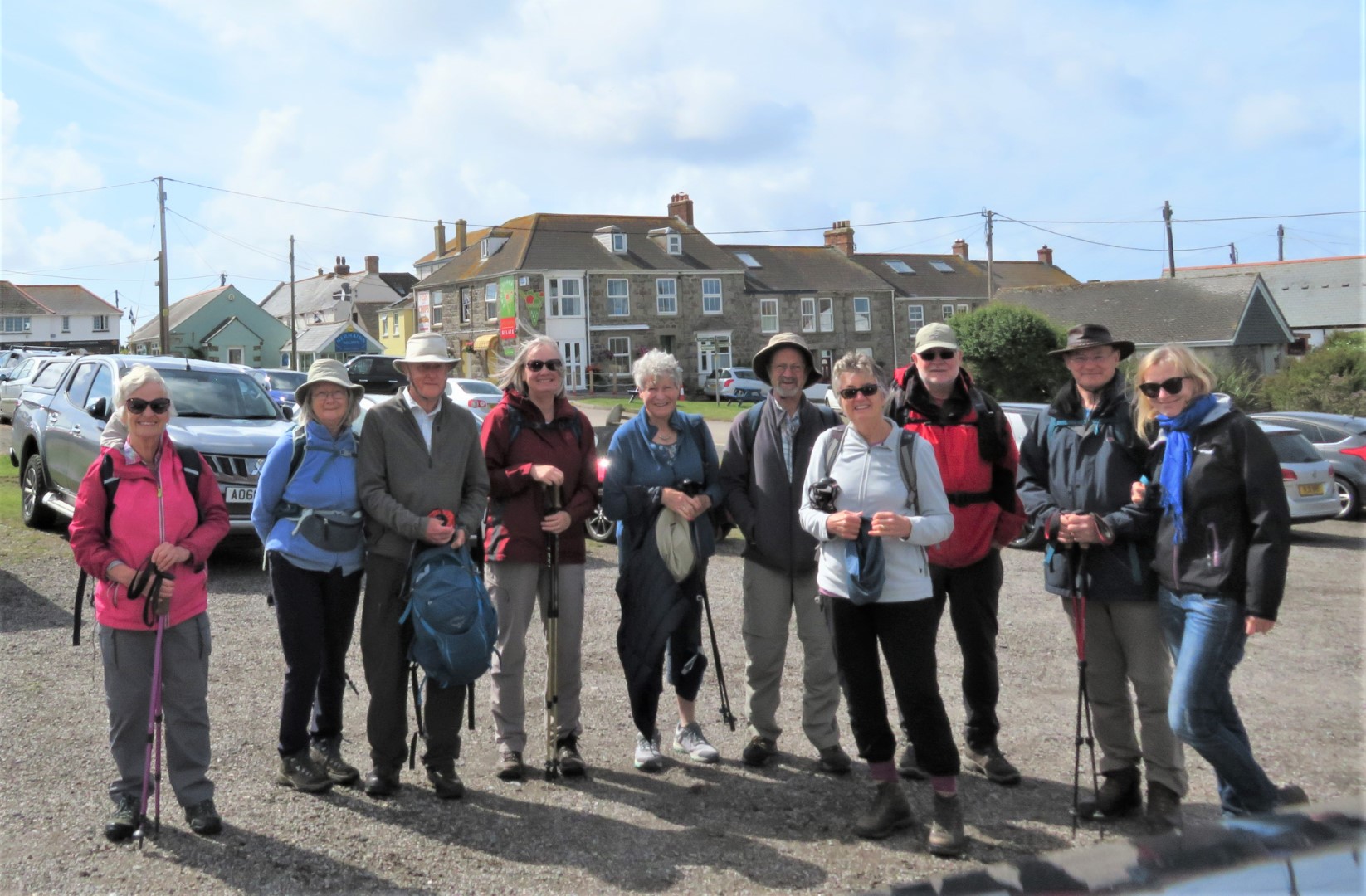
Lizard Village
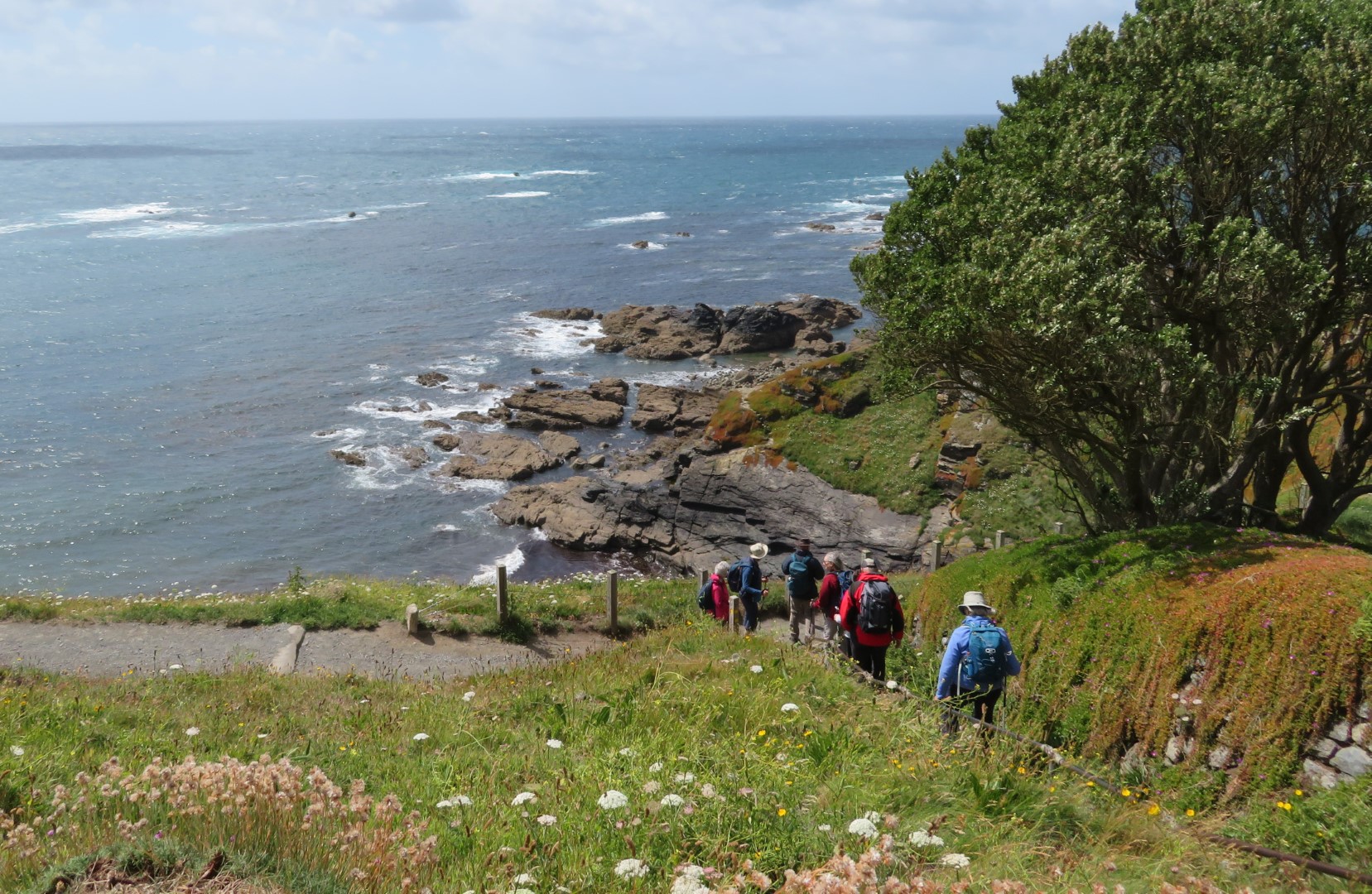
Approaching the southernmost point of the mainland
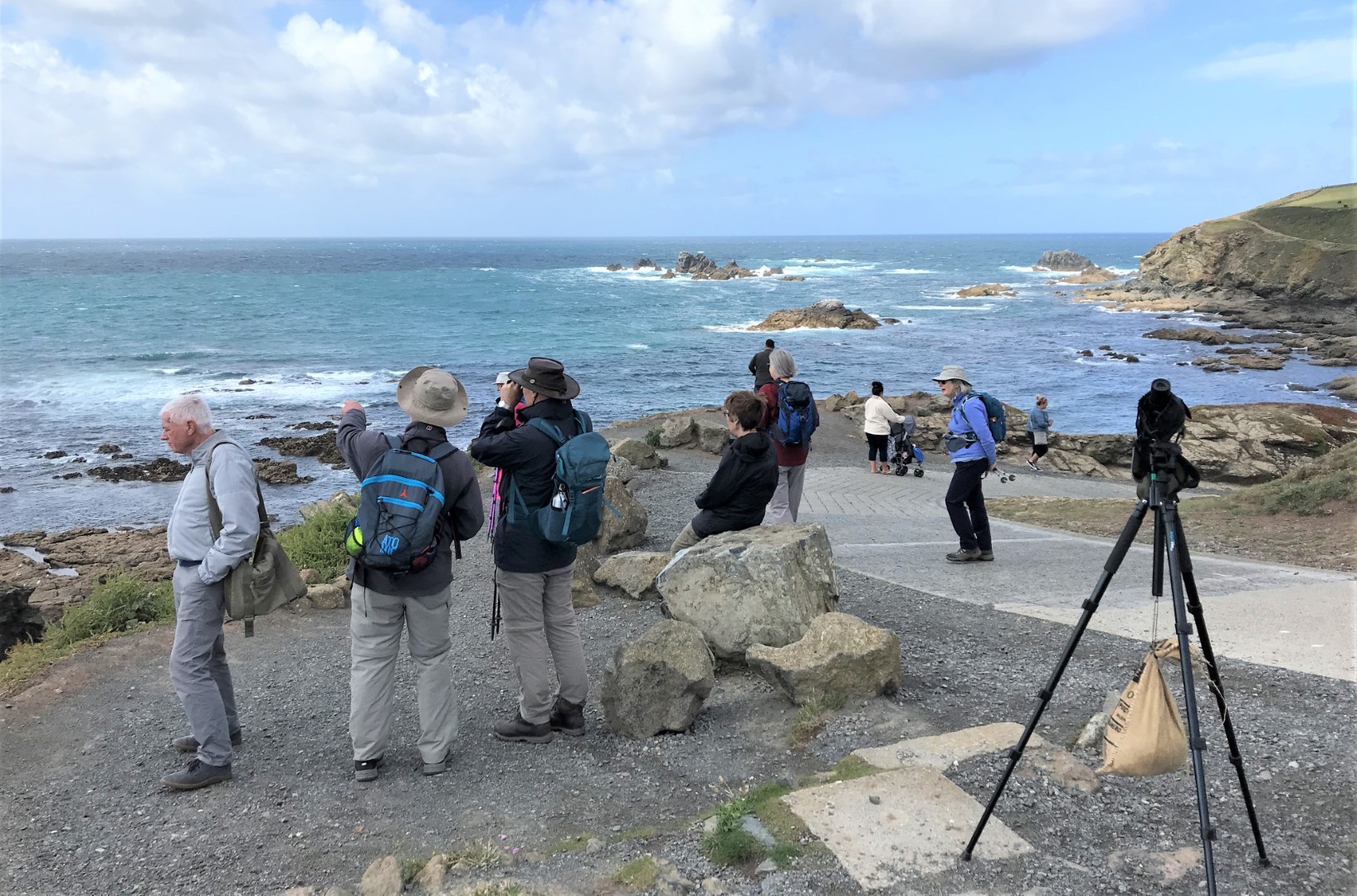
That's the very end, just down there
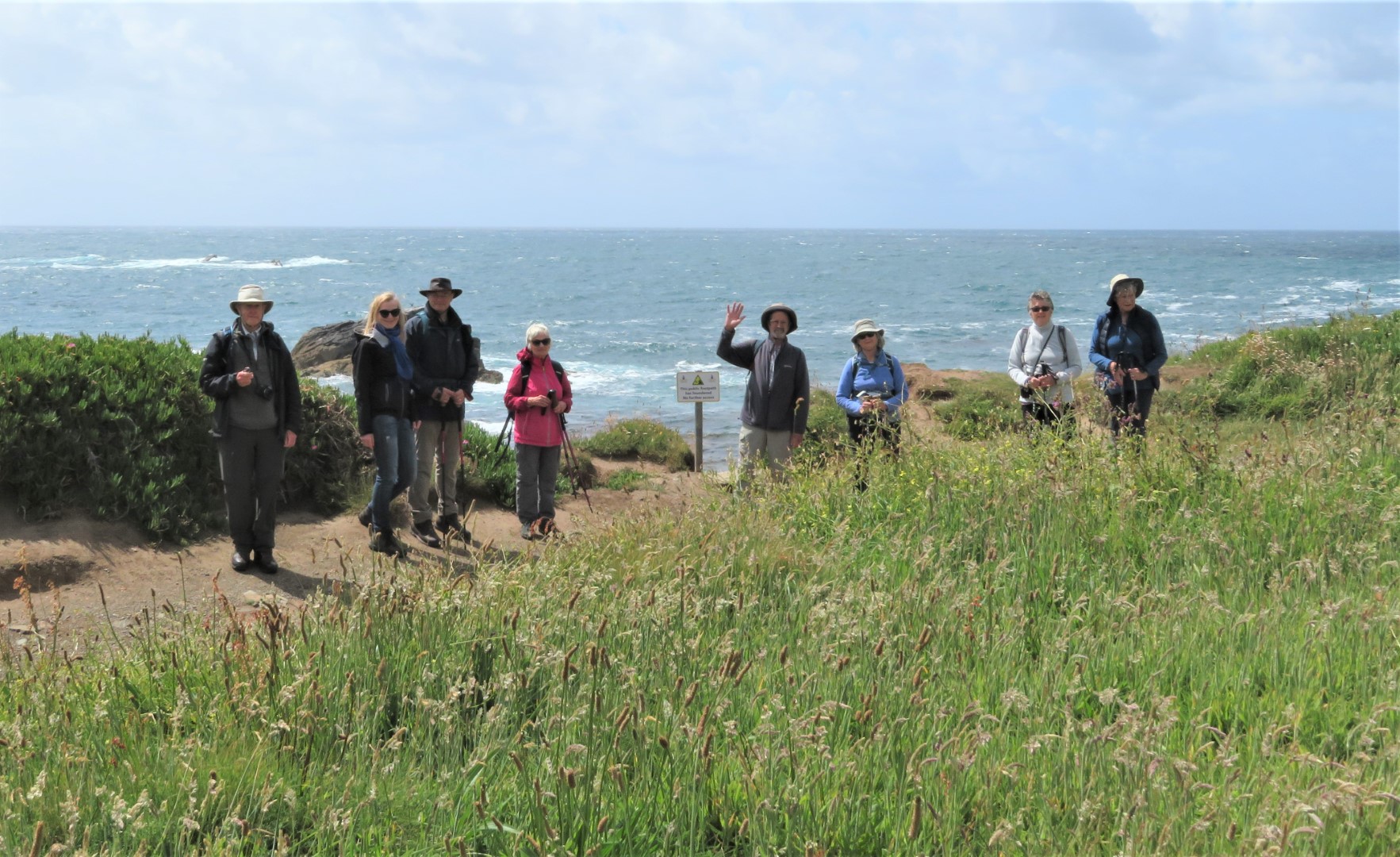
We're going this way, bye !
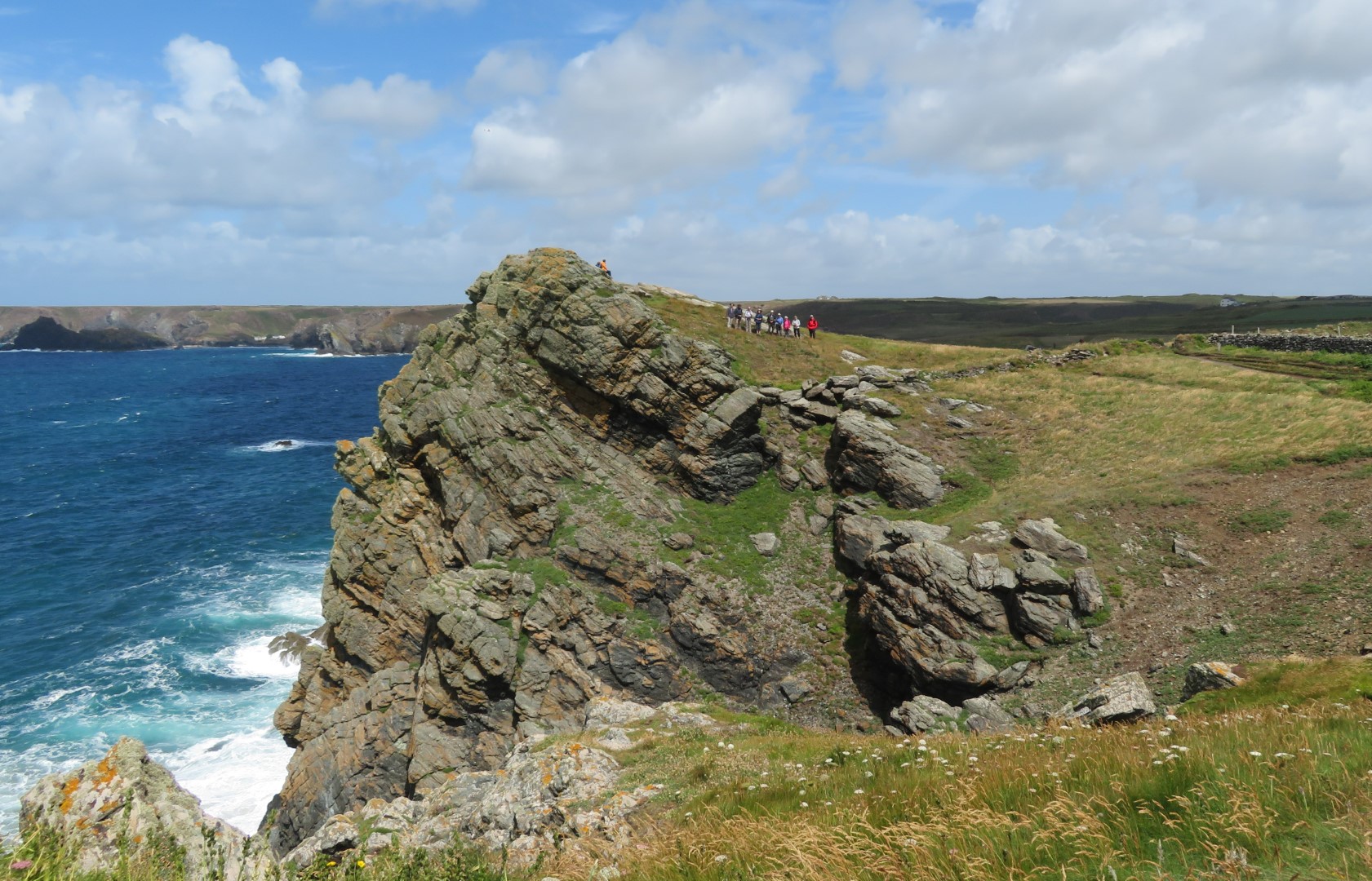
That's most of us in the middle, on top of that piece of rock
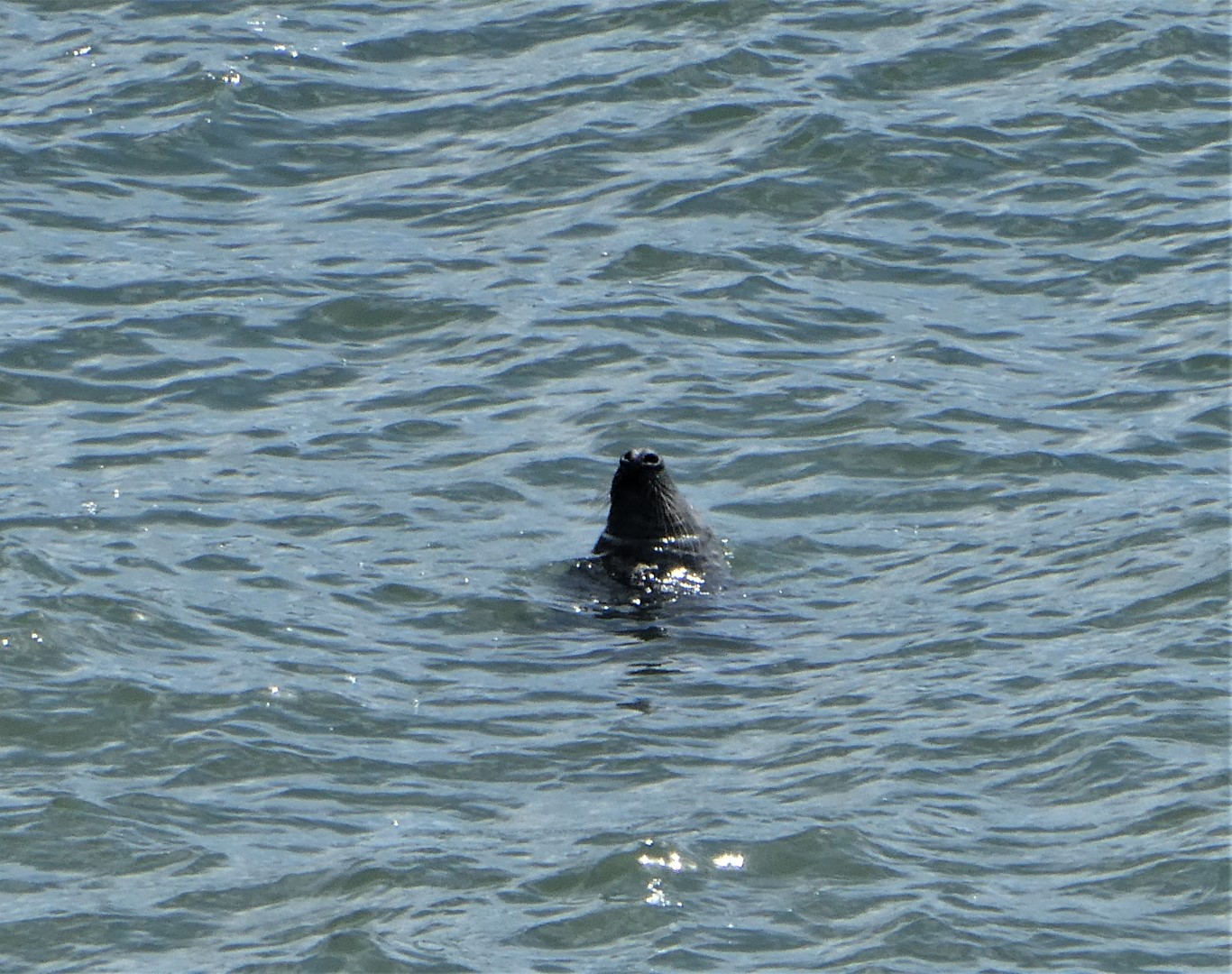
We saw a few seals, mostly asleep like this one, having a water sleep.
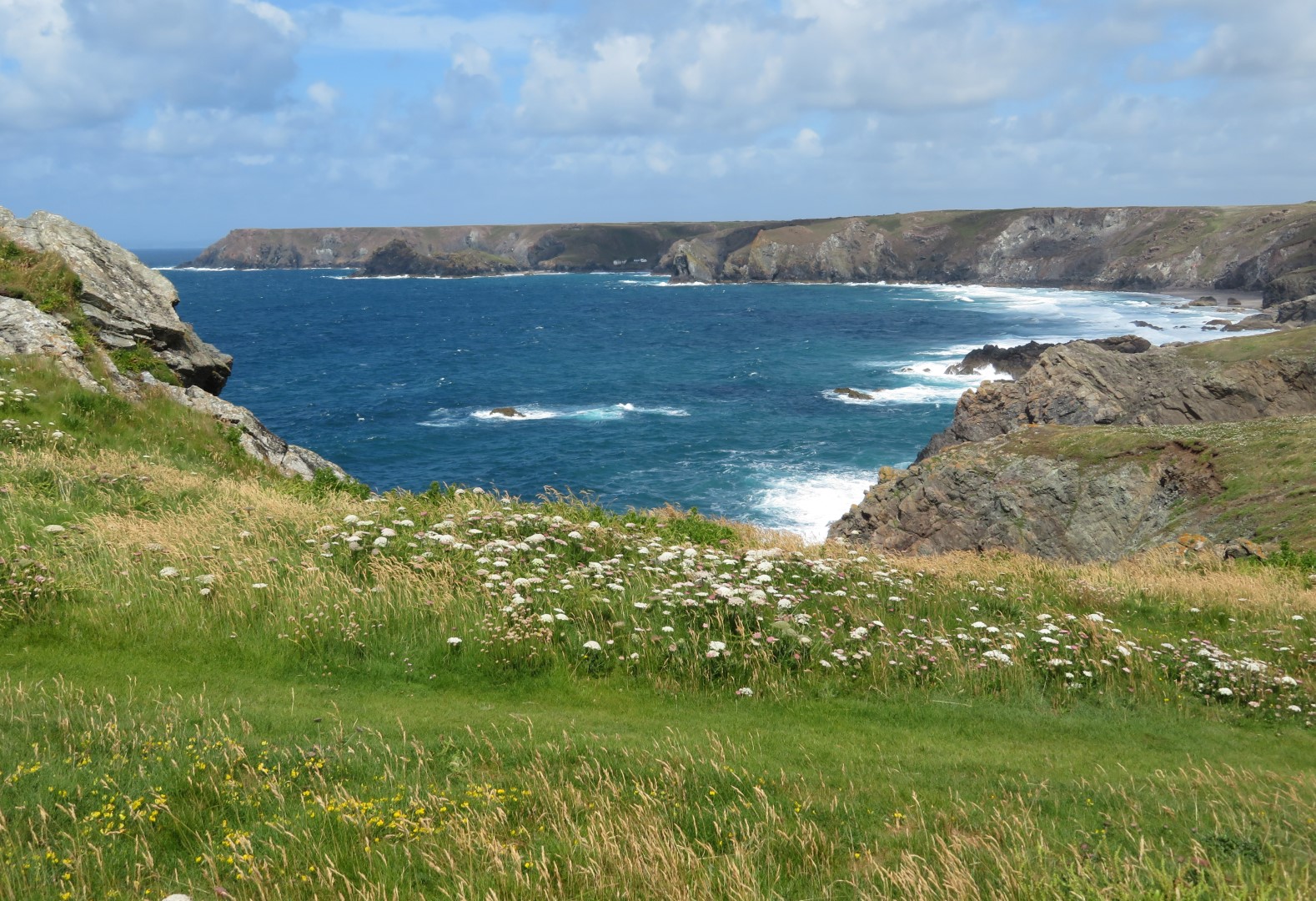
Kynance Bay is our lunch spot - in the extreme right corner
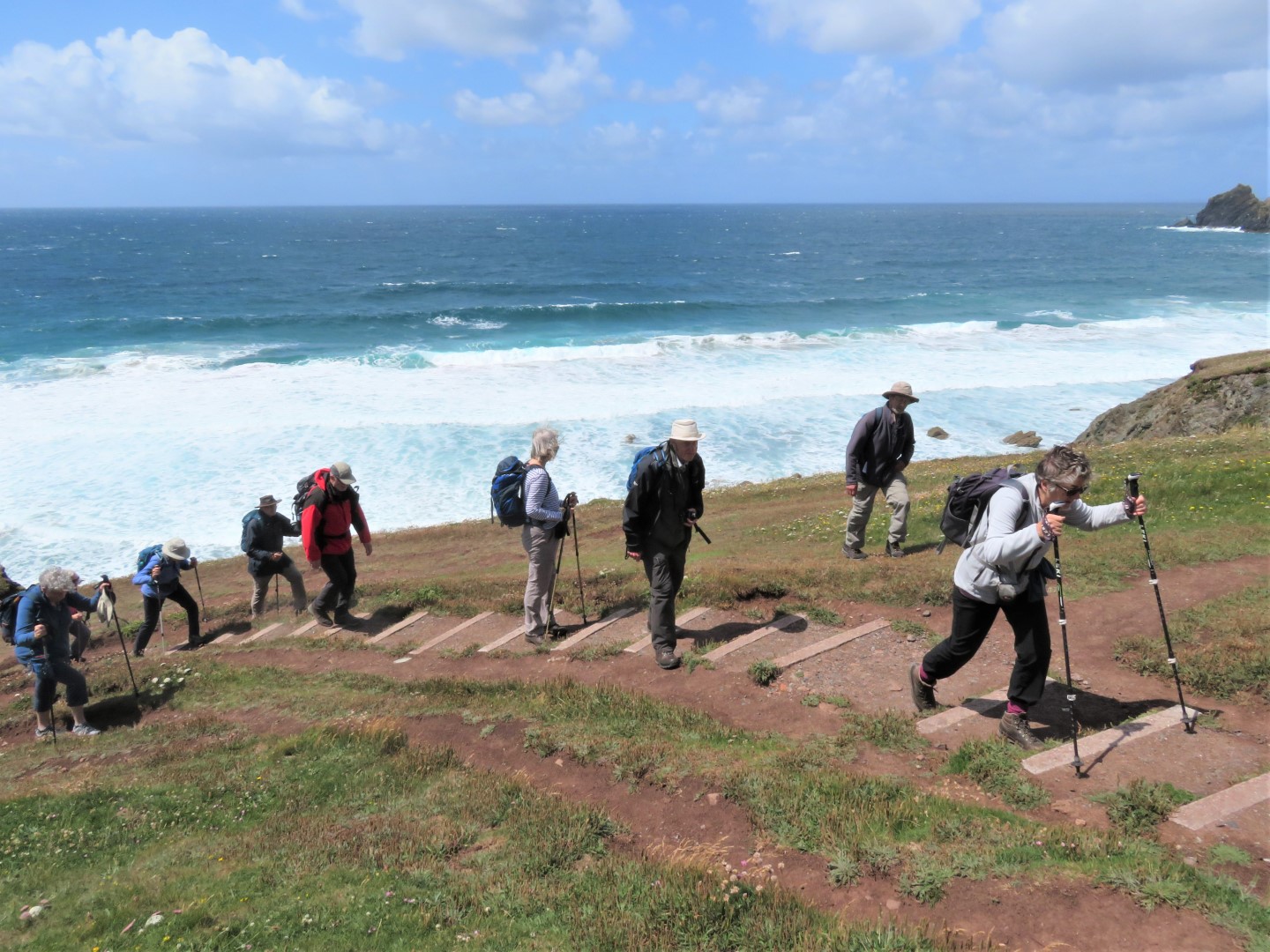
but there are a few more hills to go!

Kynance Bay, a beautiful spot, not the easiest to get to!
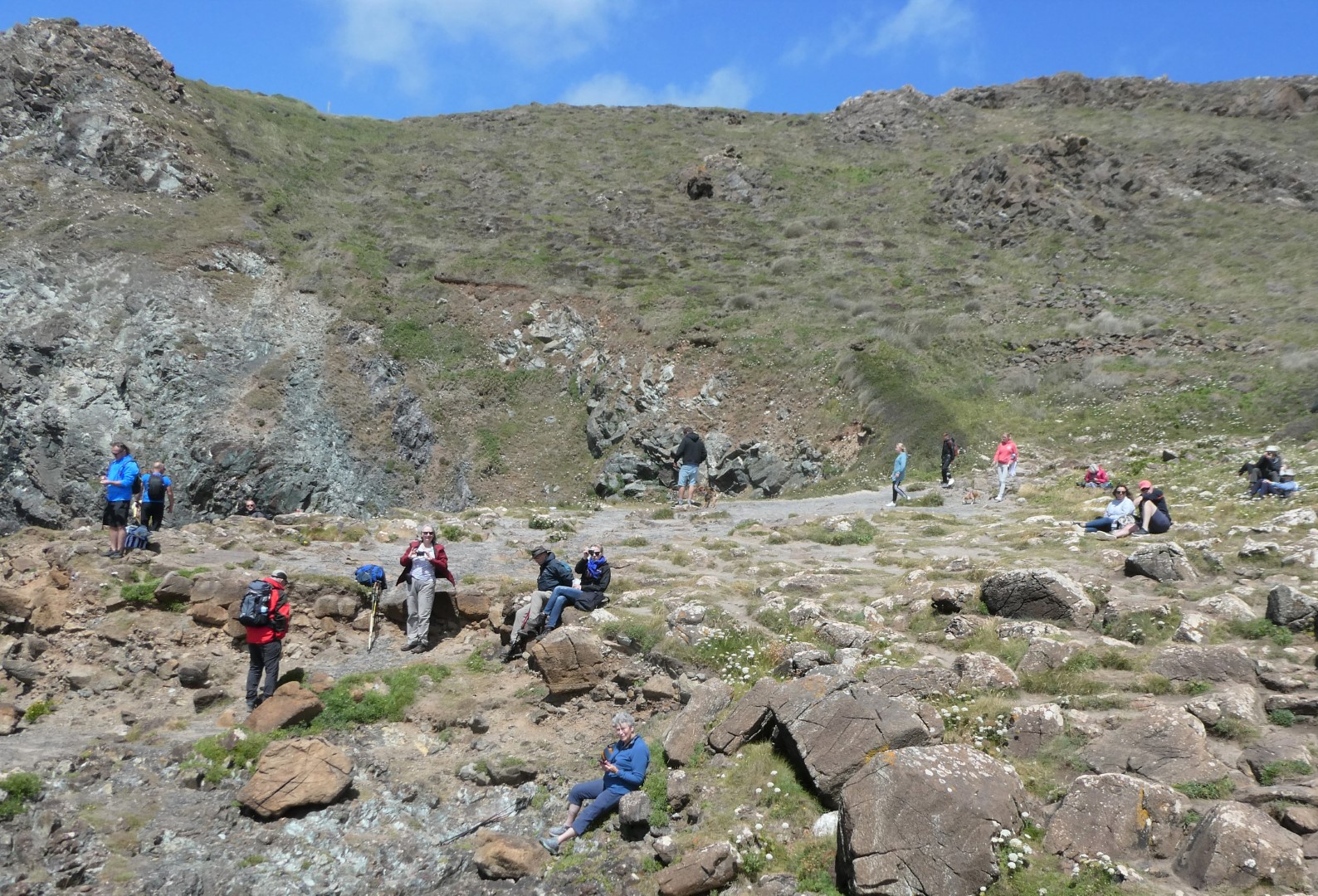
Picnic time, all sizes of rock available
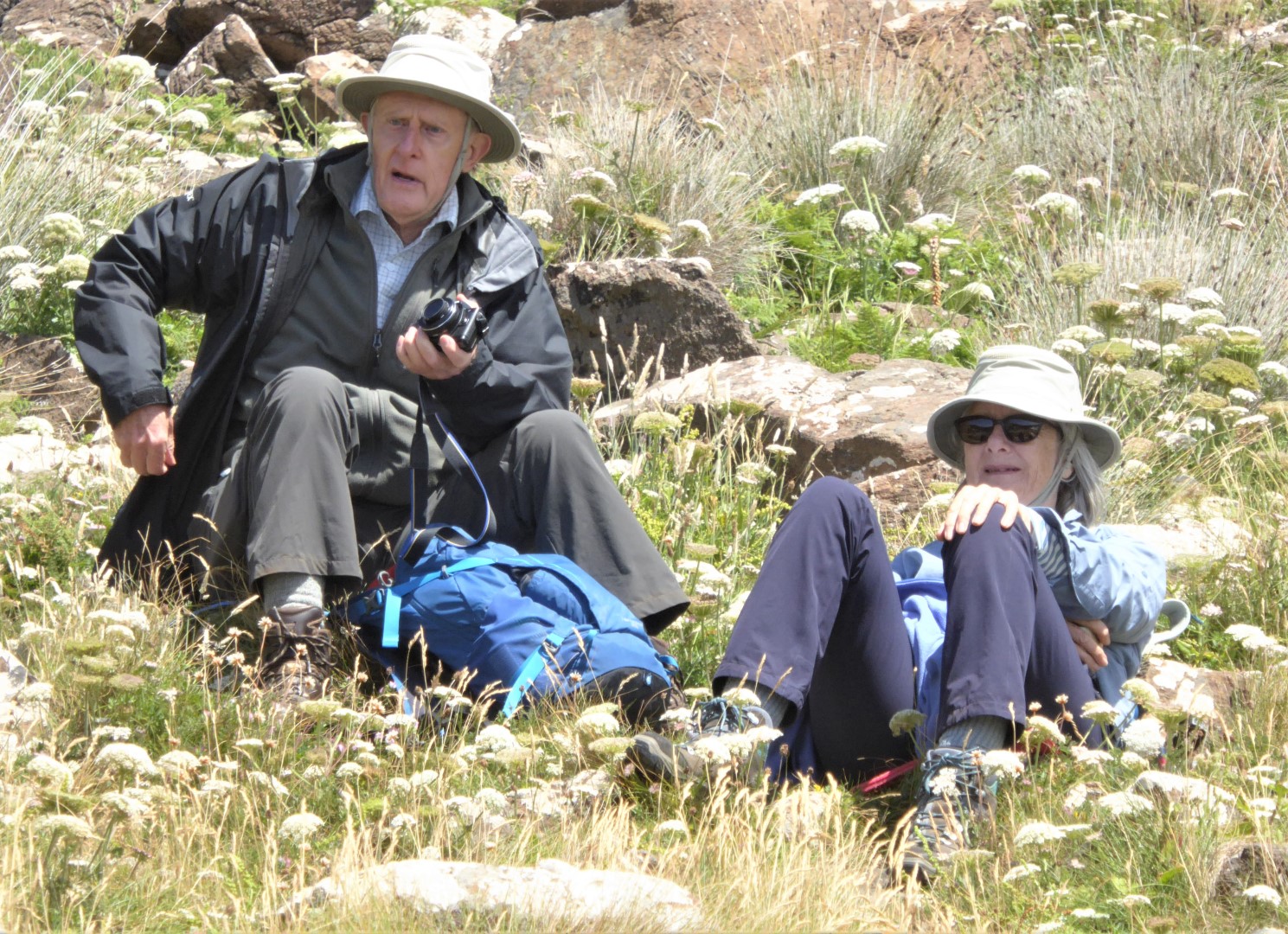
Our very welcome guest walkers for the week.
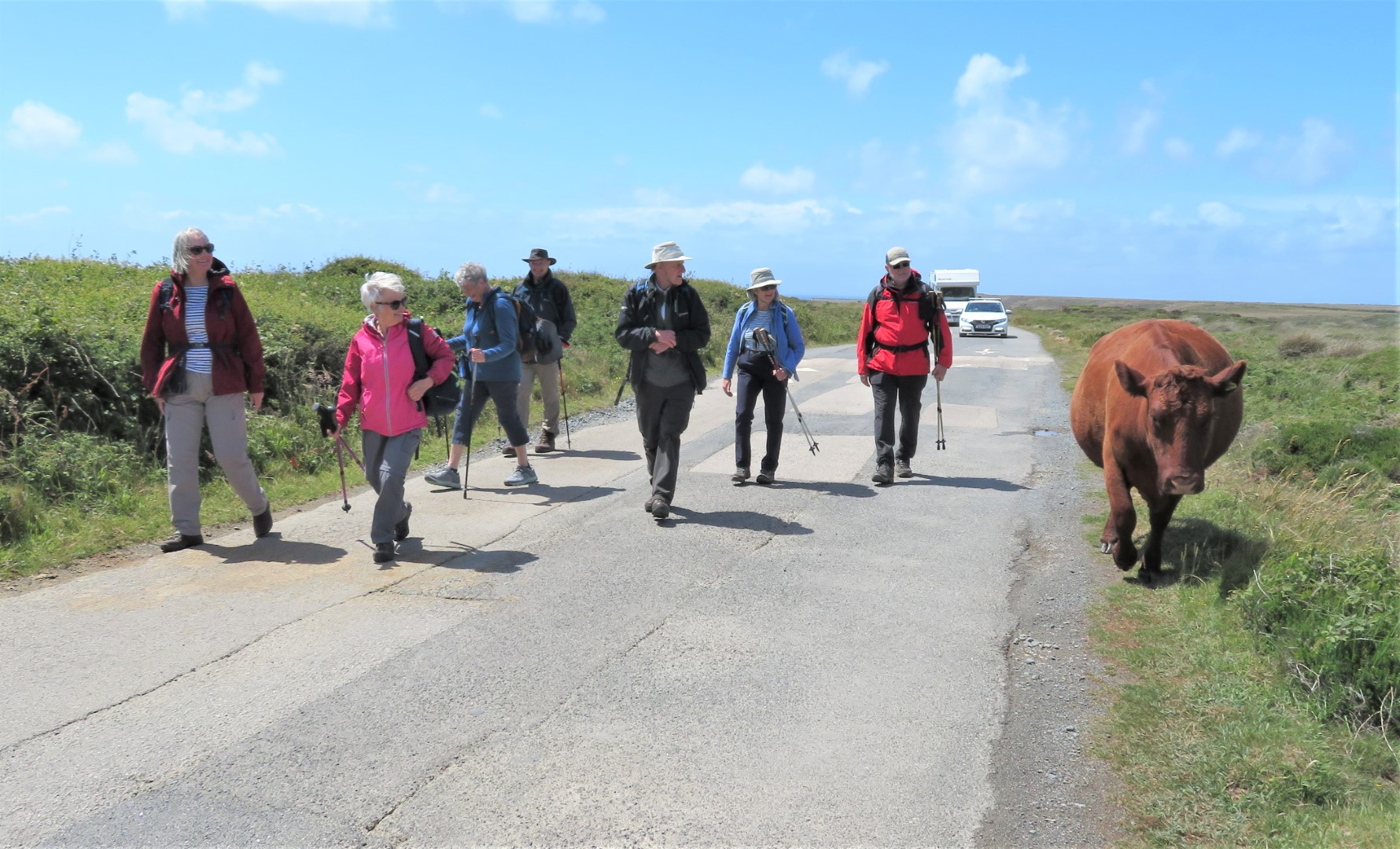
Another guest walker, not quite so welcome
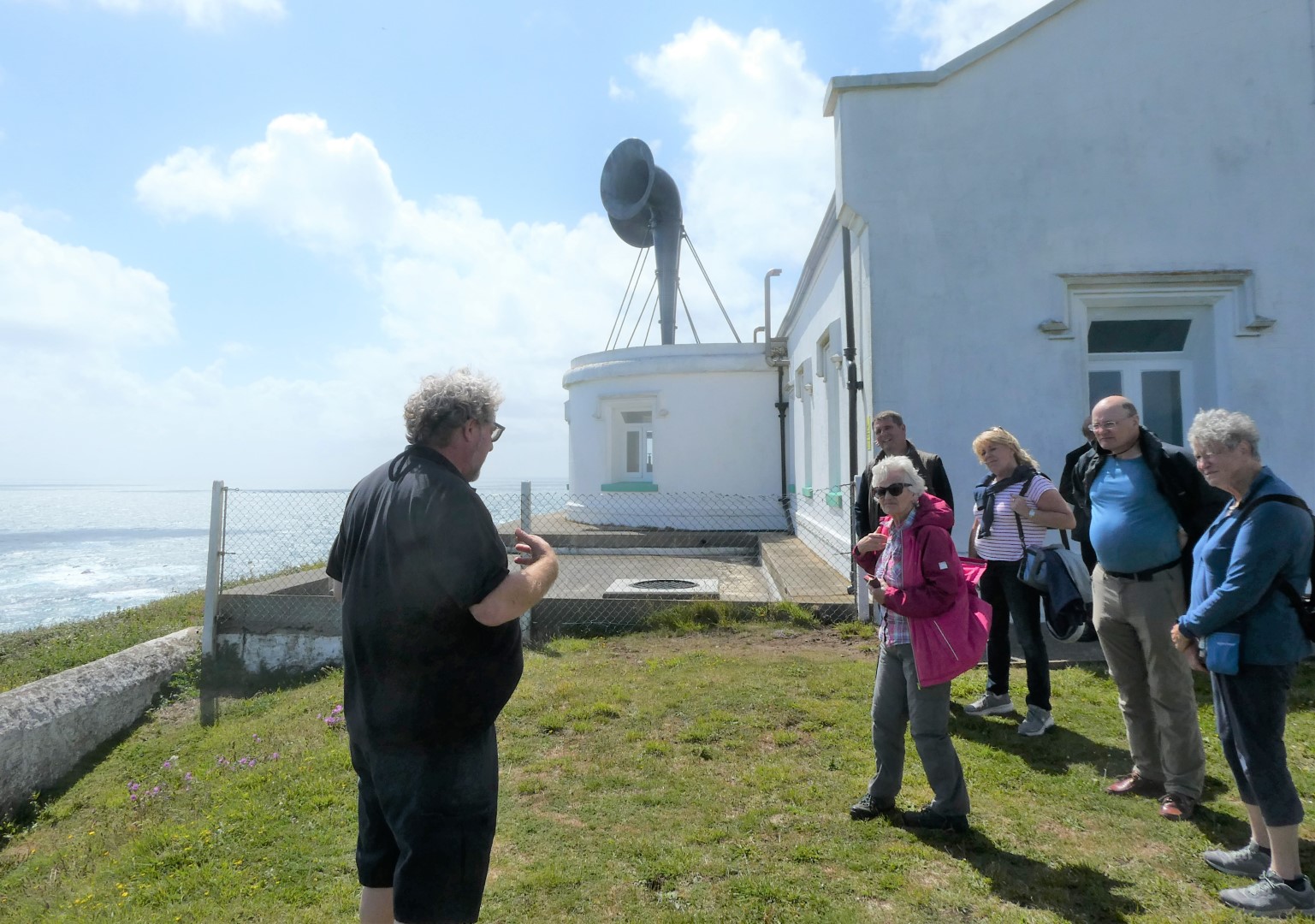
For the afternoon we had a guided tour of the Lizard Lighthouse. The foghorns in the background still work but have been superseded. They were the last compressed air horns in the UK.

Built in 1751, with a fire in the tower as a warning if needed. The Lighthouse became automatic in 1998
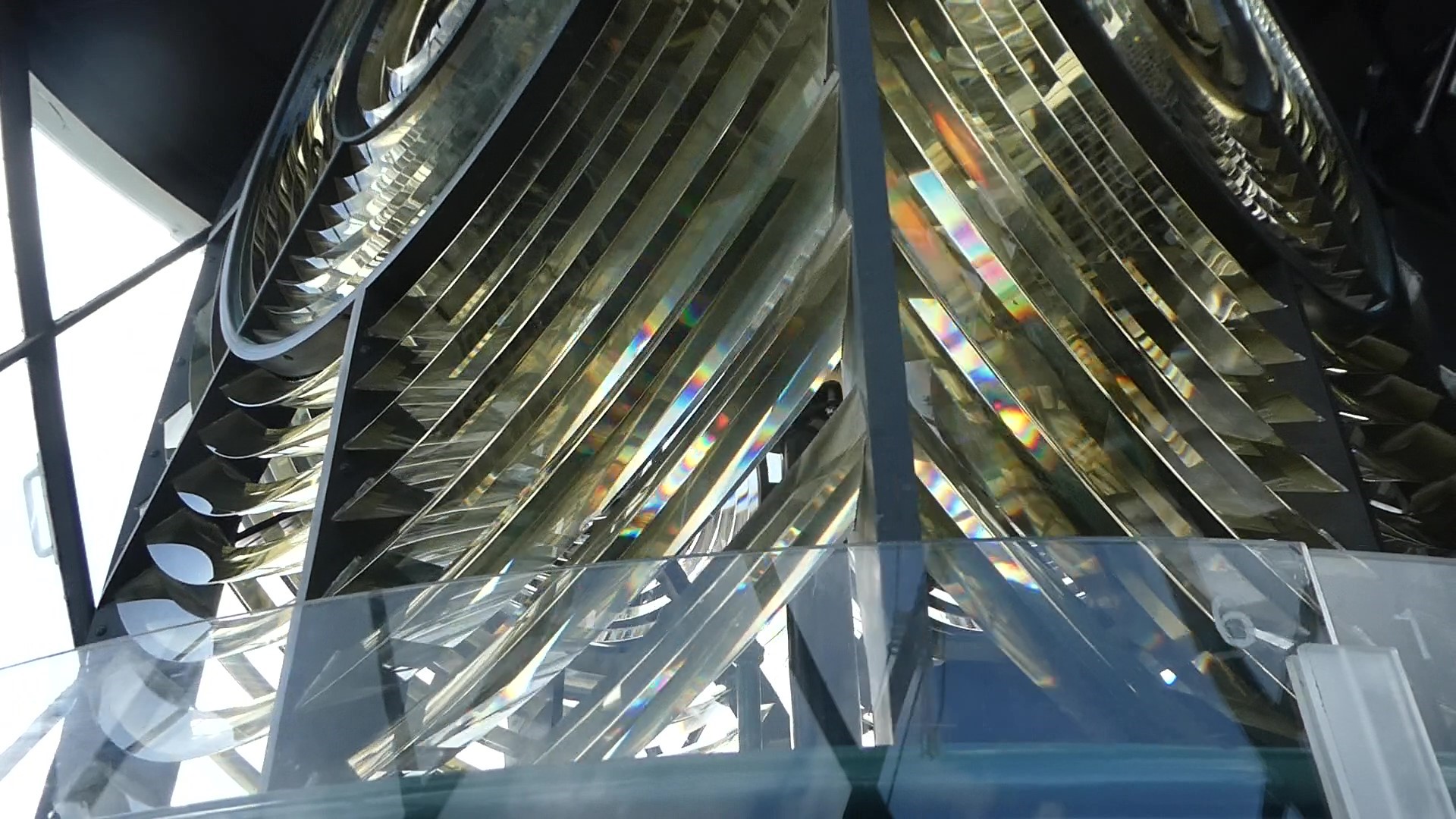
The light is a single filament bulb and aided by these glass optics, can be seen 25 miles away. They revolve on a bed of mercury.
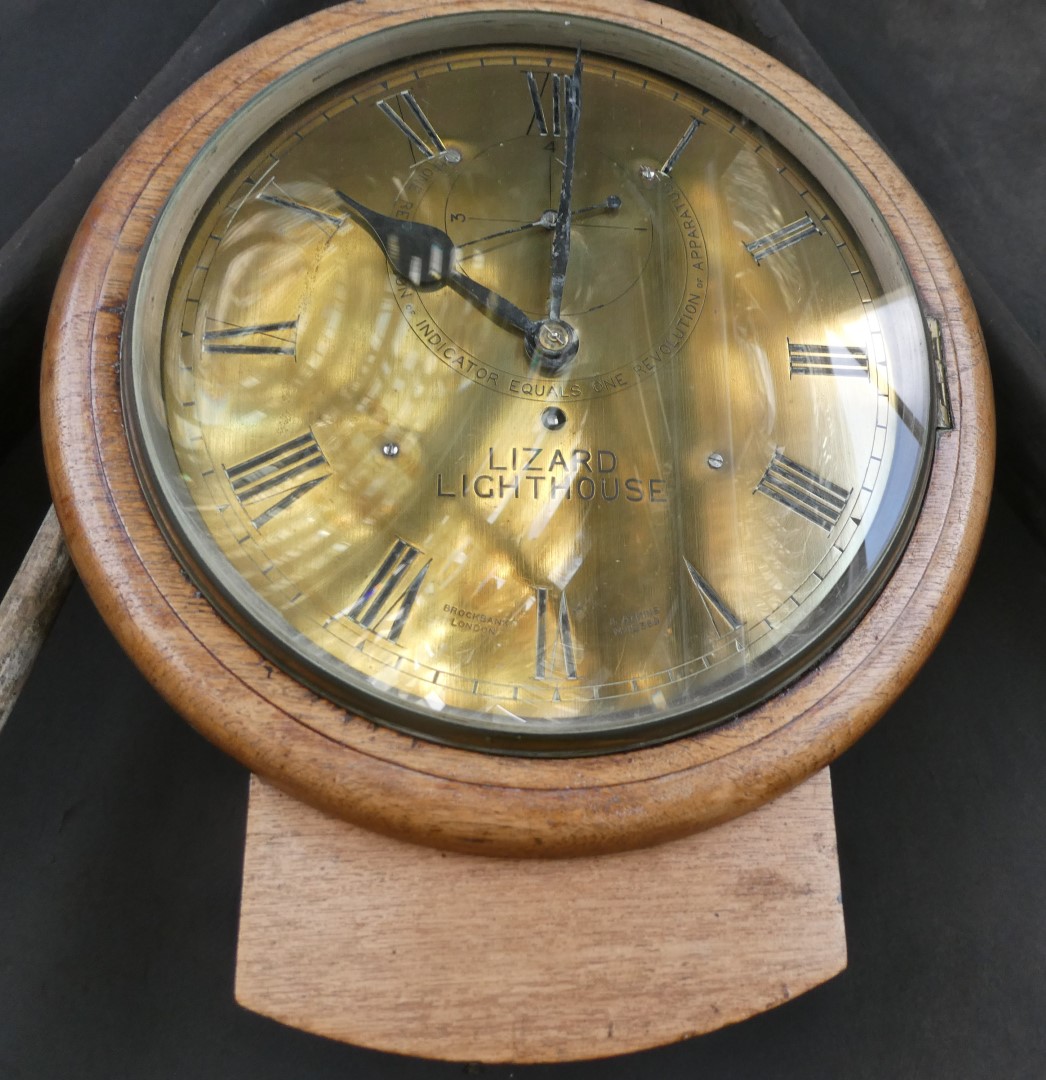
Clock needs winding!
.png)
A little under 5 miles.
Marley Heights on 22nd June 2022
With a bad back Jay was sadly unable to lead his walk so Catherine and Andy kindly took over at the last minute. We started from Fernhurst recreation ground, with a guest walker, Liza and a stray walker, John, who found our company more easily that his own Rambling group. The walk was initially all uphill but eventually rewarded by magnificent views across Fernhurst to Blackdown and further on over Petworth and on perhaps to the Cissbury Ring. Trees were in the way to look to the south. Thankfully that was the last of the climbing as we subsequently descended through Greenhill and Cognor Wood to eventually emerge on to the lane near the Augustinian Shuldbrede Priory. An ancestor of the current resident was composer Sir Hubert Parry. The priory water supply was from local springs, stored in the cellars and lifted by hand. In 1914 a Hydraulic Ram was fitted which by clever use of valves used that water power to automatically pump the water to a tank in the roof.
From there we walked through Oakreeds Wood and then through fields and paths until we eventually met Van Lane, our route back to The Red Lion, where many of us enjoyed a well deserved lunch. The walk was around 5 miles. 
Pre walk exercises?
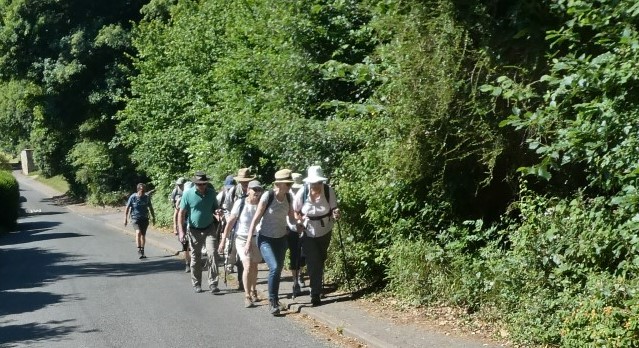
Setting off up the hill, with a stray!
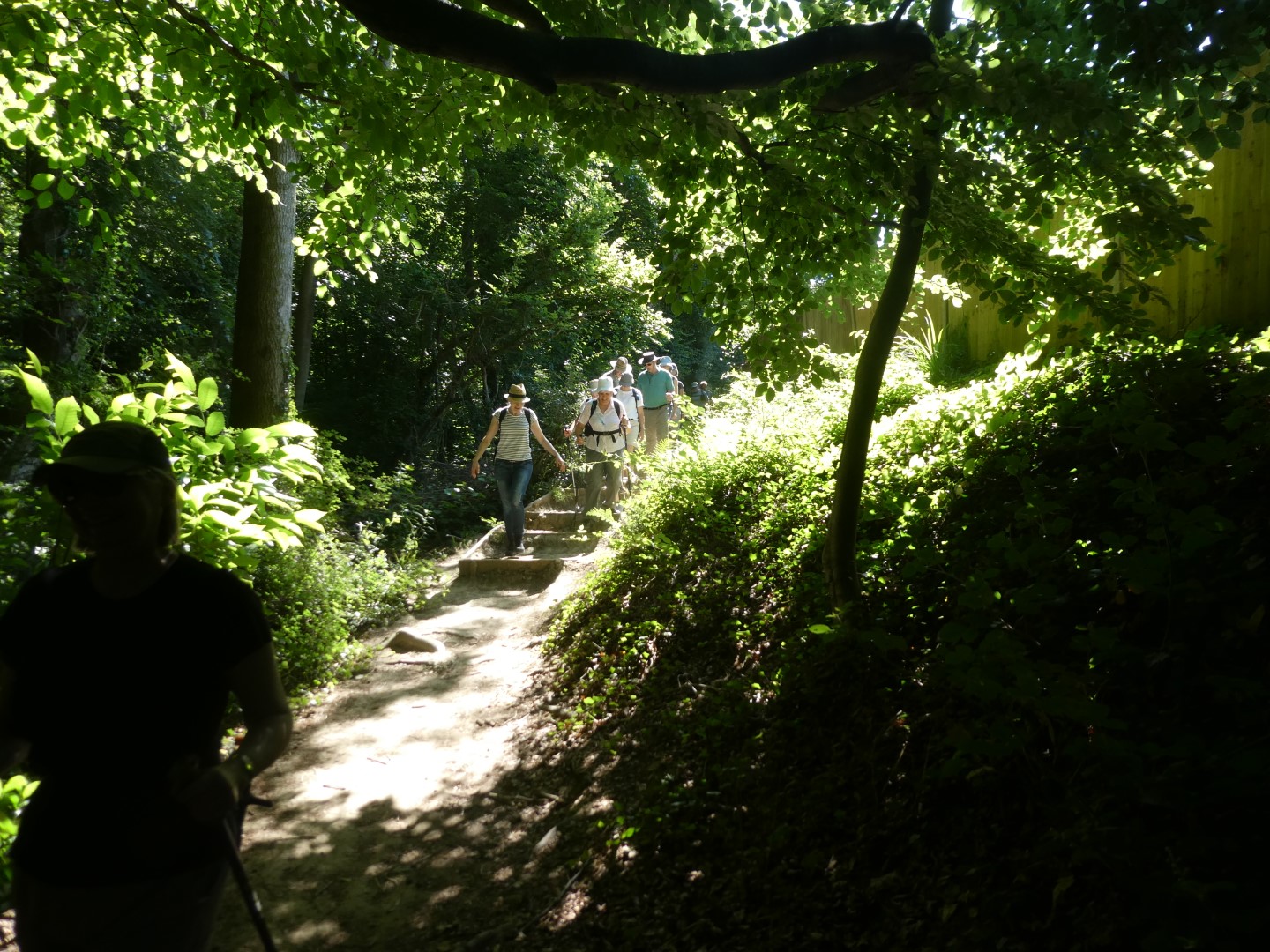
Treading carefully down the steps behind Nappers Wood
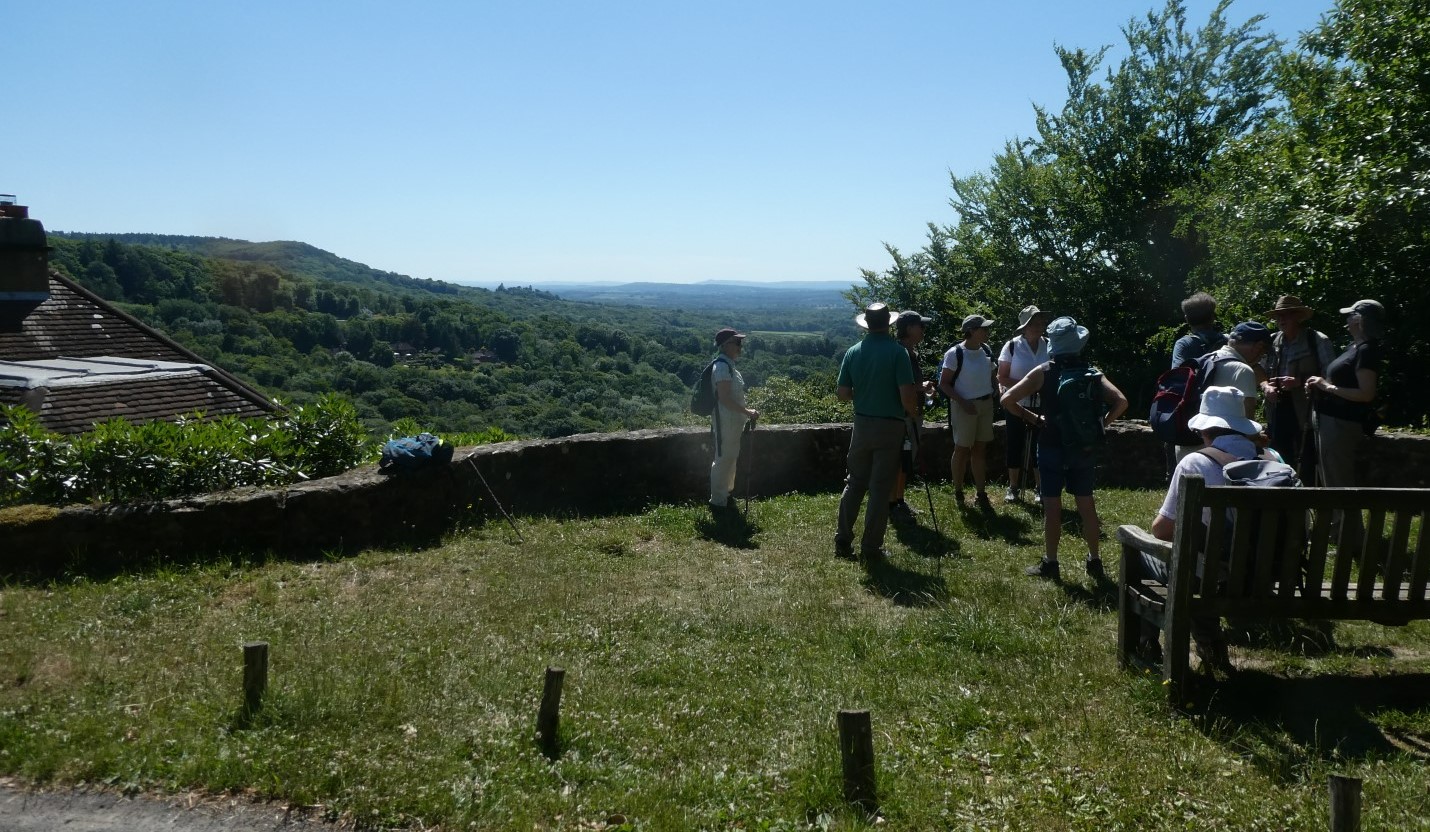
Lovely view from Marley Heights
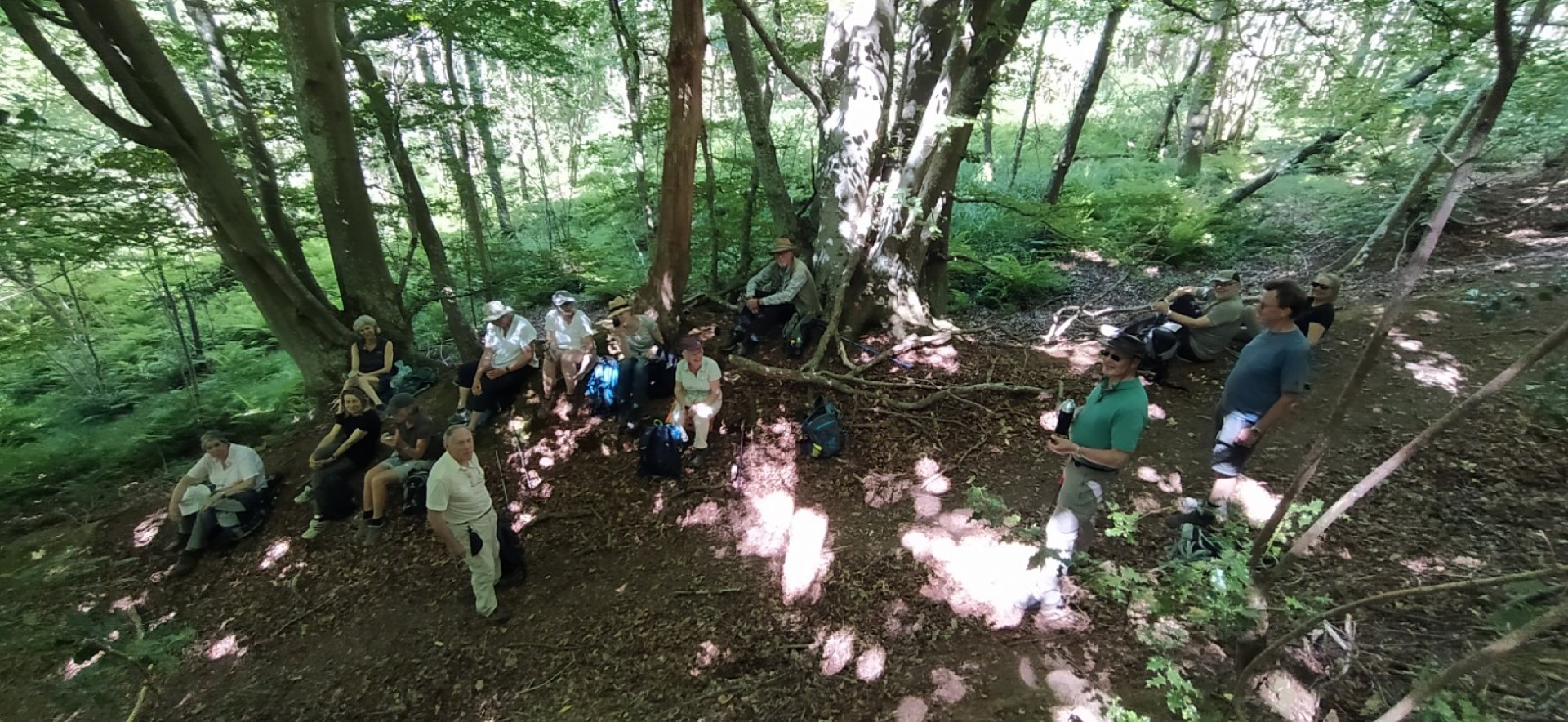
Drinks stop in the woods
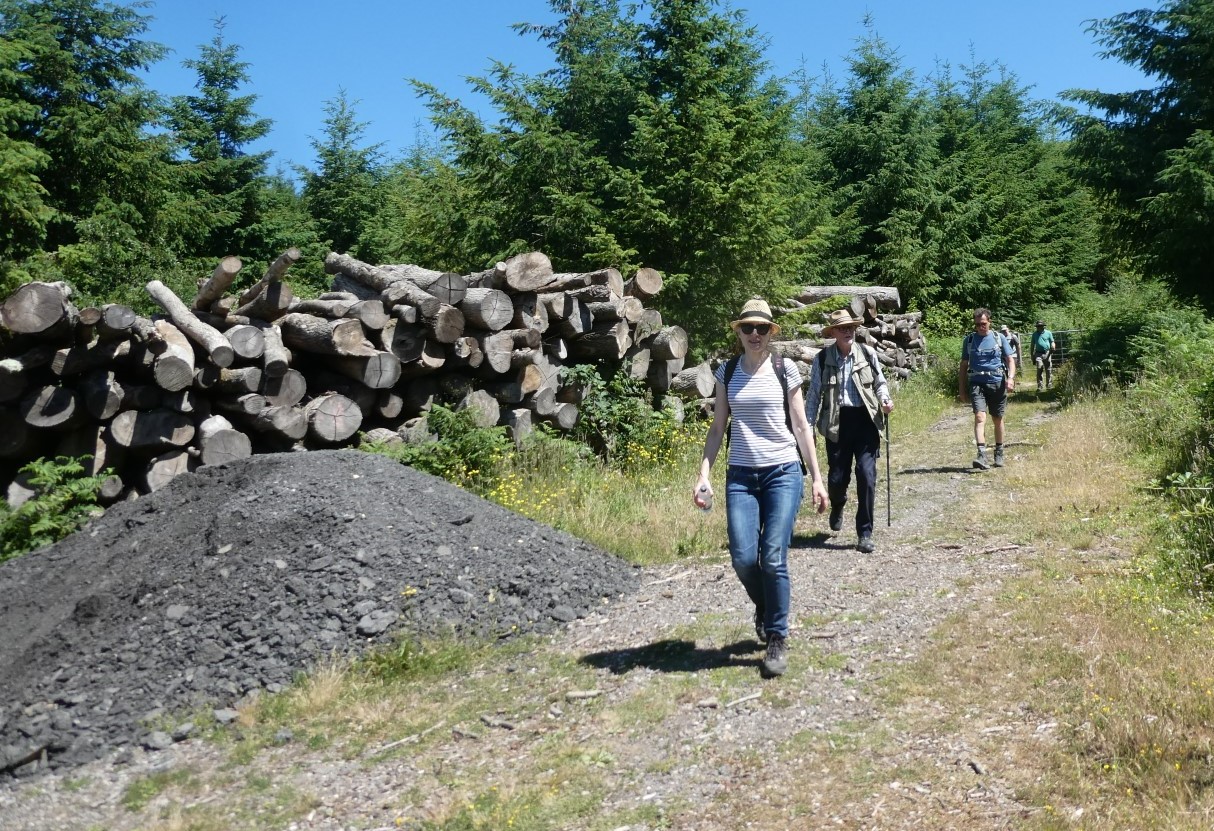
Emerging from Greenhill Wood

Driveway to Shulbrede Priory
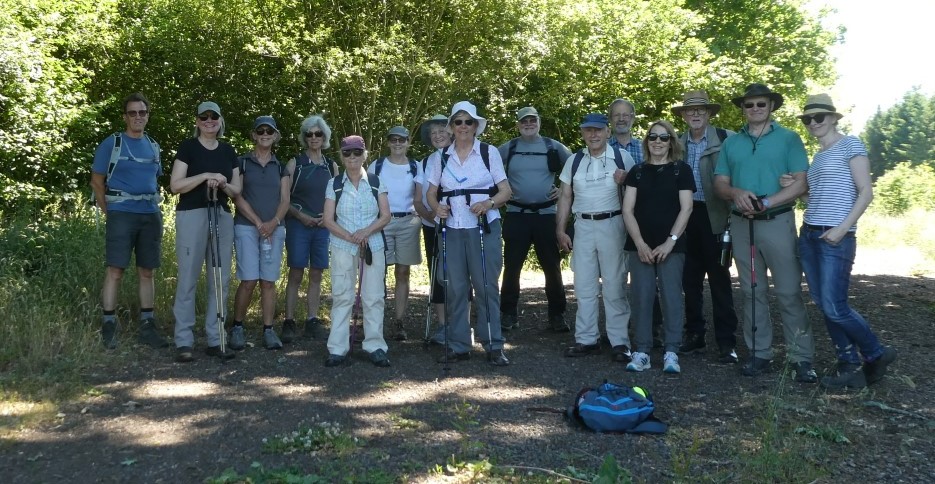
Group photo, normally easily organized.........
Recent galleries
- Amberley Walk on 5th November 2025
- Redford and AGM walk on 29th October 2025
- Chiddingfold walk on 22nd October 2025
- Petworth Park walk on 15th October 2025
- West Dean walk on 8th October 2025
History
2025
- November (1)
- October (5)
- September (4)
- August (4)
- July (5)
- June (4)
- May (5)
- April (4)
- March (5)
- February (3)
- January (4)
2024
- December (3)
- November (5)
- October (4)
- September (4)
- August (4)
- July (4)
- June (5)
- May (5)
- April (5)
- March (5)
- February (5)
- January (4)
2023
- December (3)
- November (6)
- October (5)
- September (5)
- August (3)
- July (4)
- June (6)
- May (5)
- April (4)
- March (5)
- February (4)
- January (4)
2022
- December (4)
- November (5)
- October (5)
- September (3)
- August (4)
- July (6)
- June (11)
- May (4)
- April (5)
- March (4)
- February (5)
- January (4)
2021
2020
- December (4)
- November (1)
- October (5)
- September (4)
- August (3)
- July (3)
- March (2)
- February (5)
- January (3)
2019
- December (2)
- November (5)
- October (4)
- September (3)
- August (4)
- July (4)
- June (11)
- May (5)
- April (4)
- March (3)
- February (5)
- January (5)
2018
- December (2)
- November (4)
- October (4)
- September (5)
- August (4)
- July (3)
- June (5)
- May (8)
- April (4)
- March (4)
- February (5)
- January (3)
2017
- December (3)
- November (5)
- October (3)
- September (4)
- August (4)
- July (4)
- June (11)
- May (4)
- April (4)
- March (3)
- February (4)
- January (5)
2016
- December (3)
- November (4)
- October (5)
- September (4)
- August (3)
- July (6)
- June (11)
- May (4)
- April (5)
- March (3)
- February (10)
- January (2)
2015
2014
- June (2)
1997
- February (1)